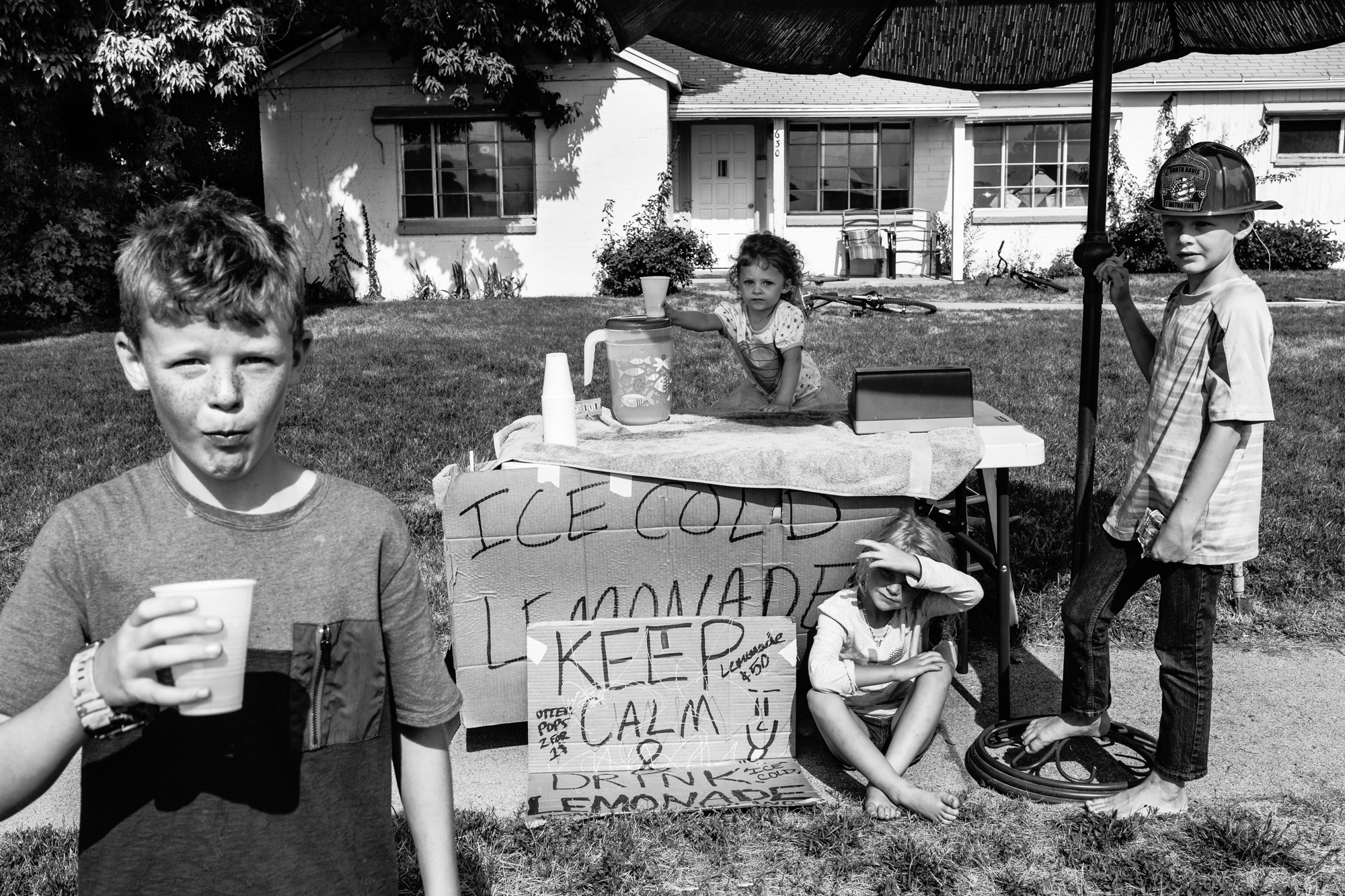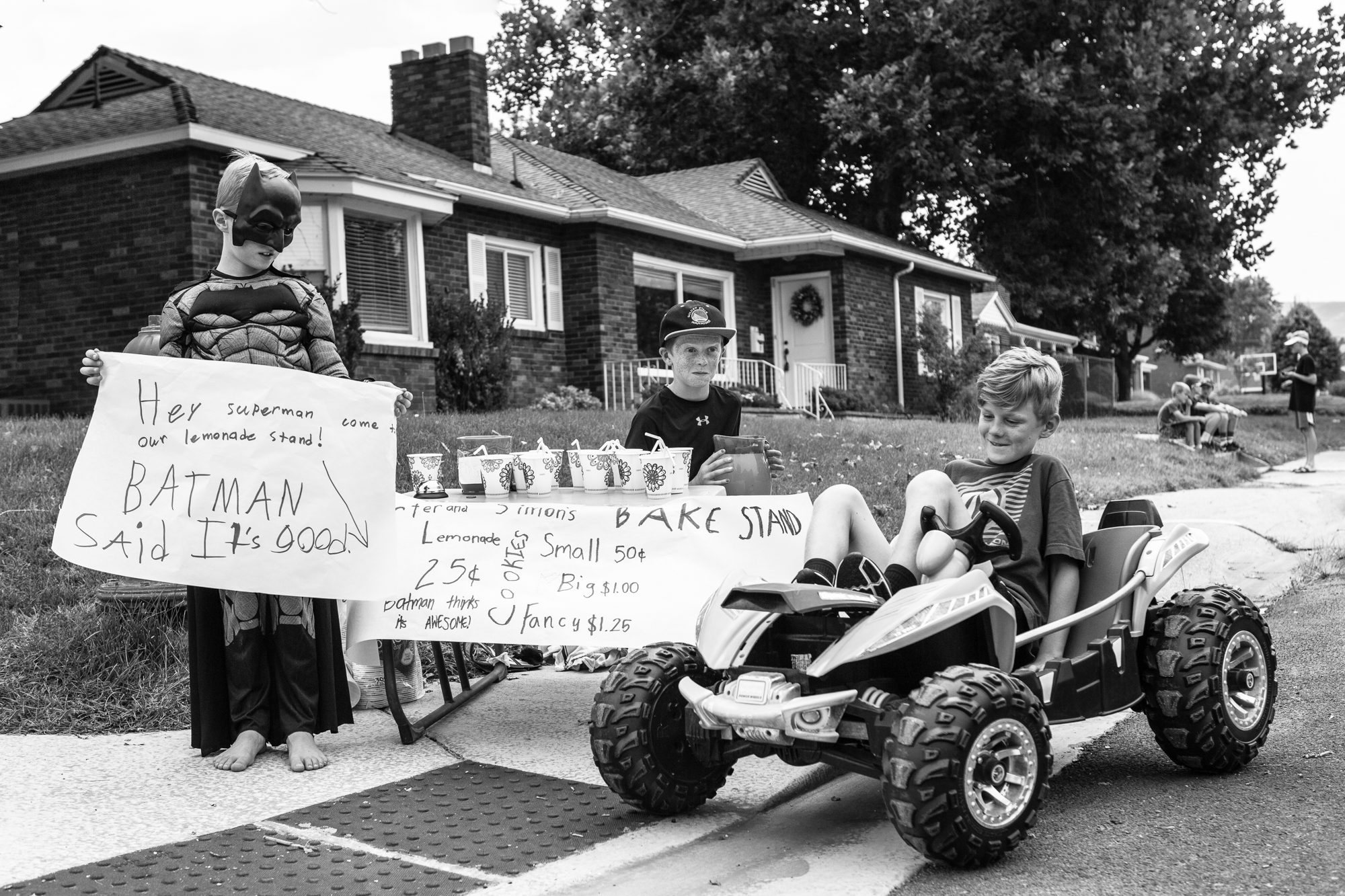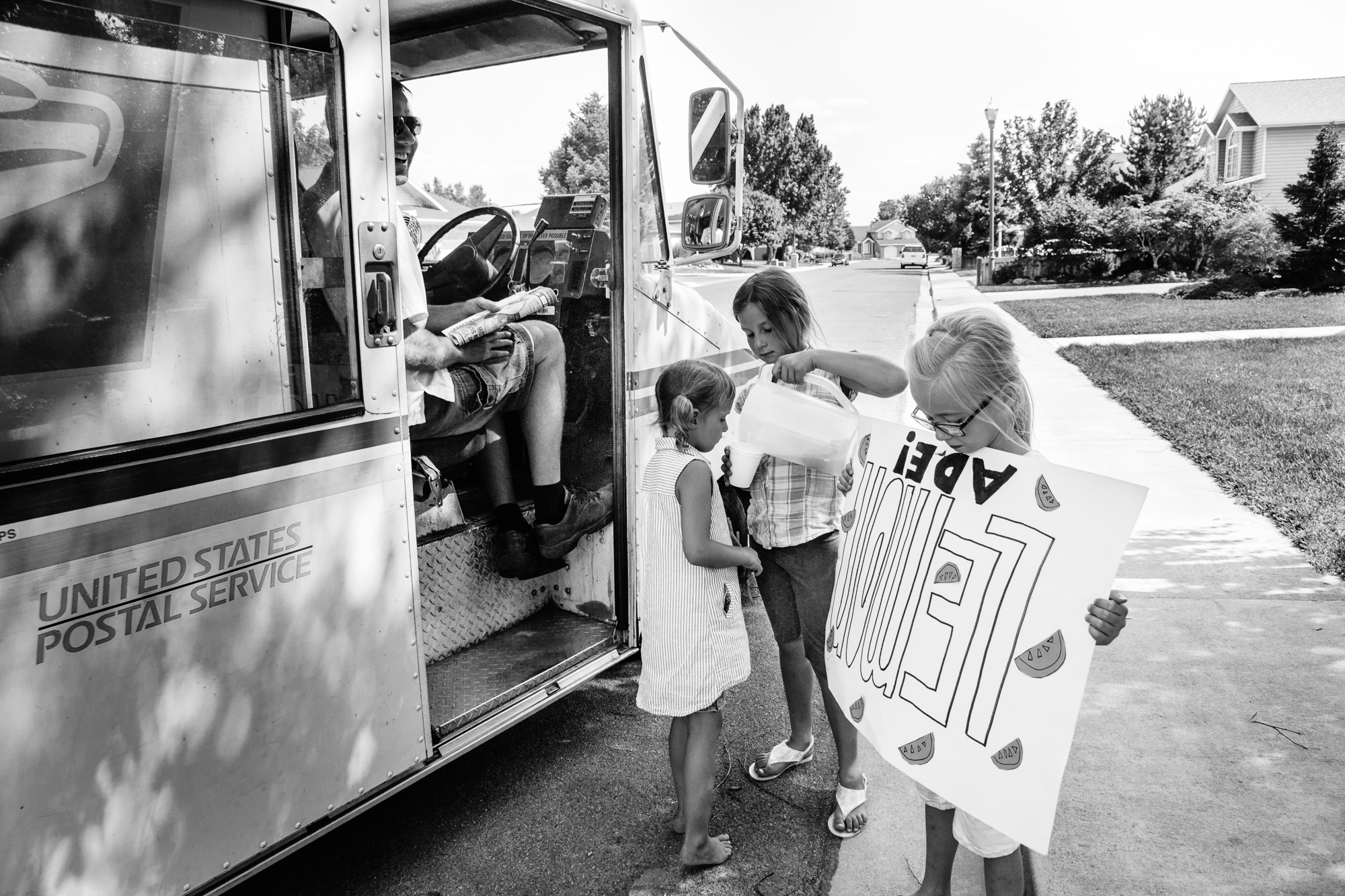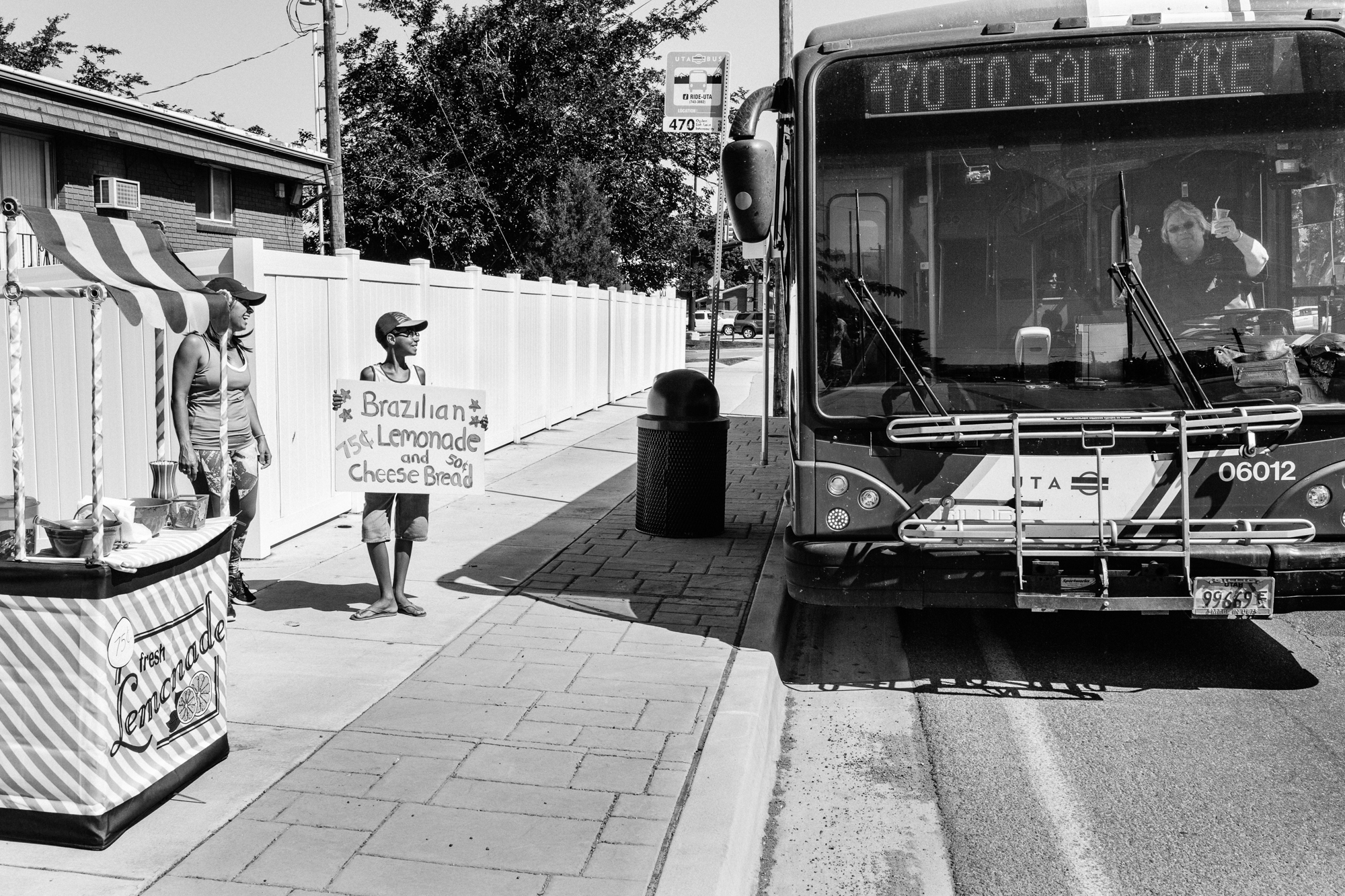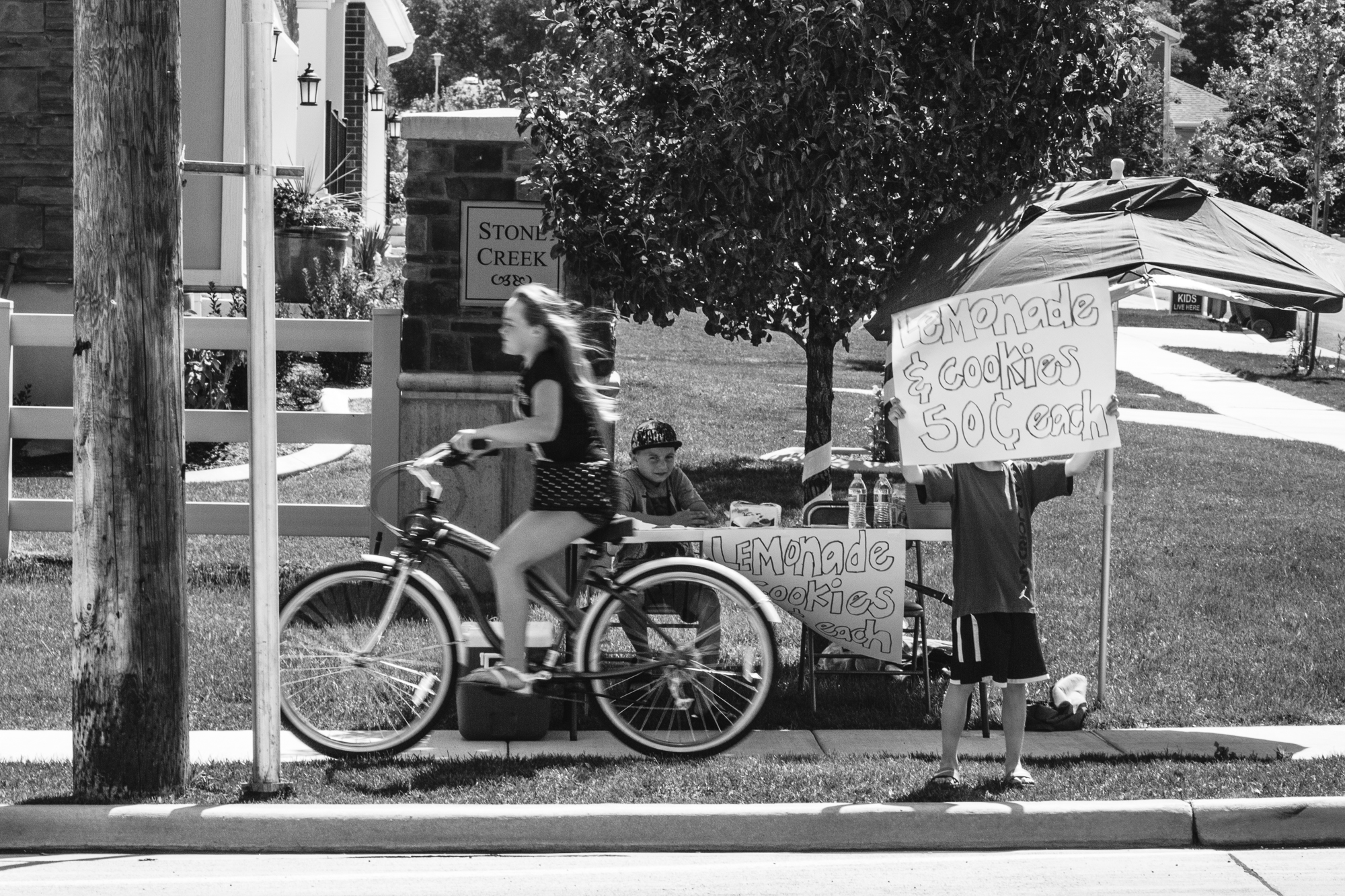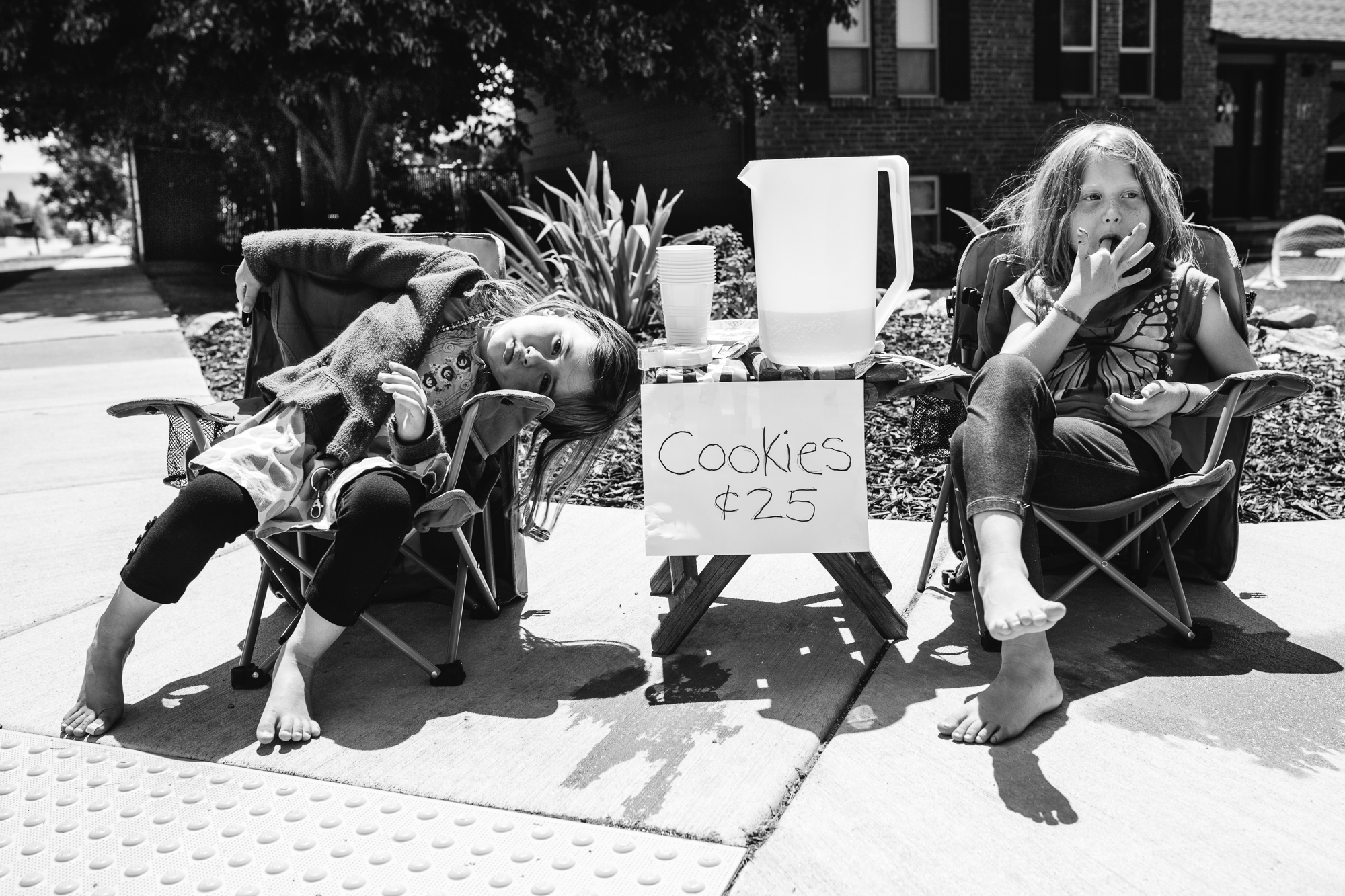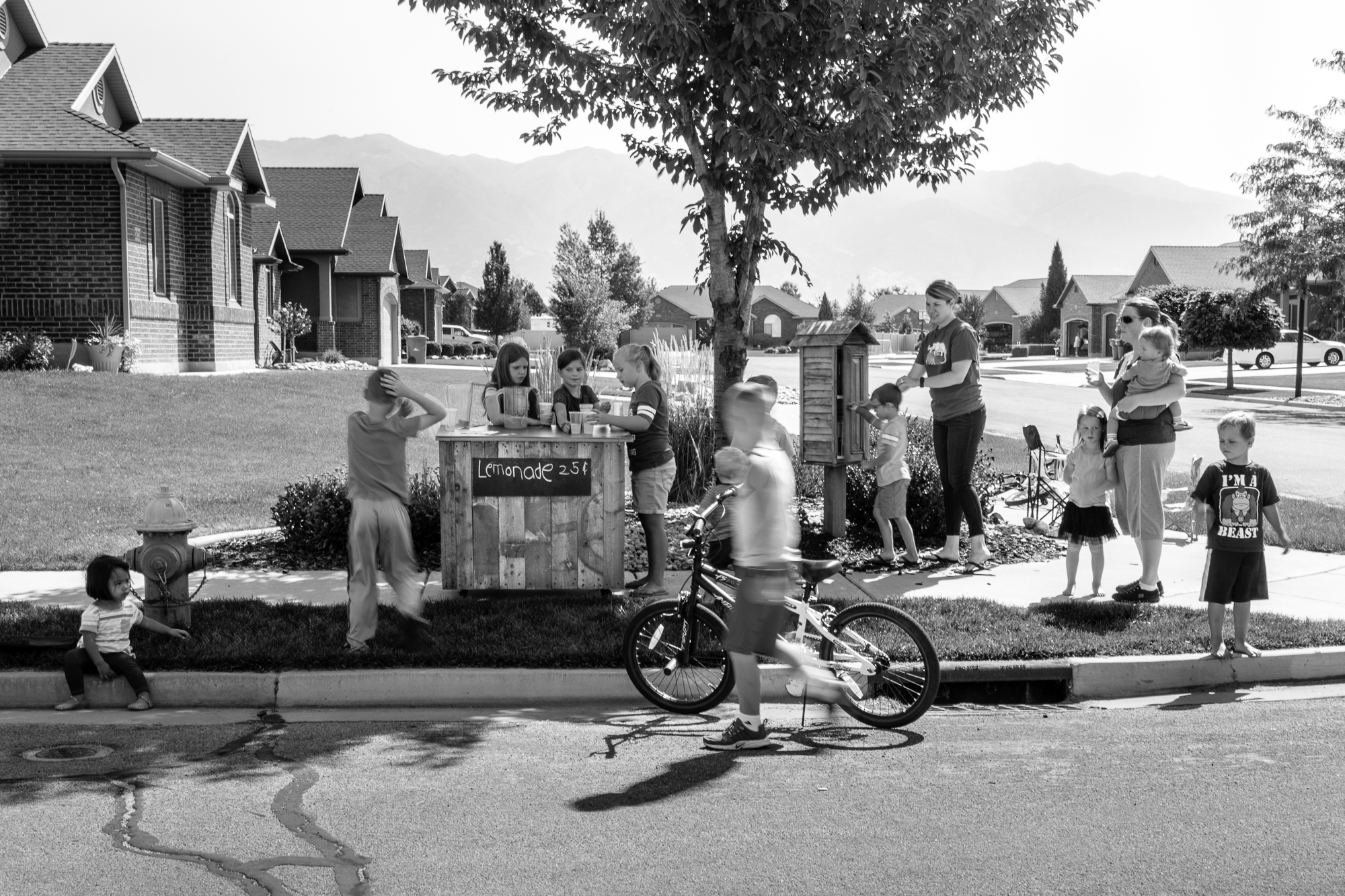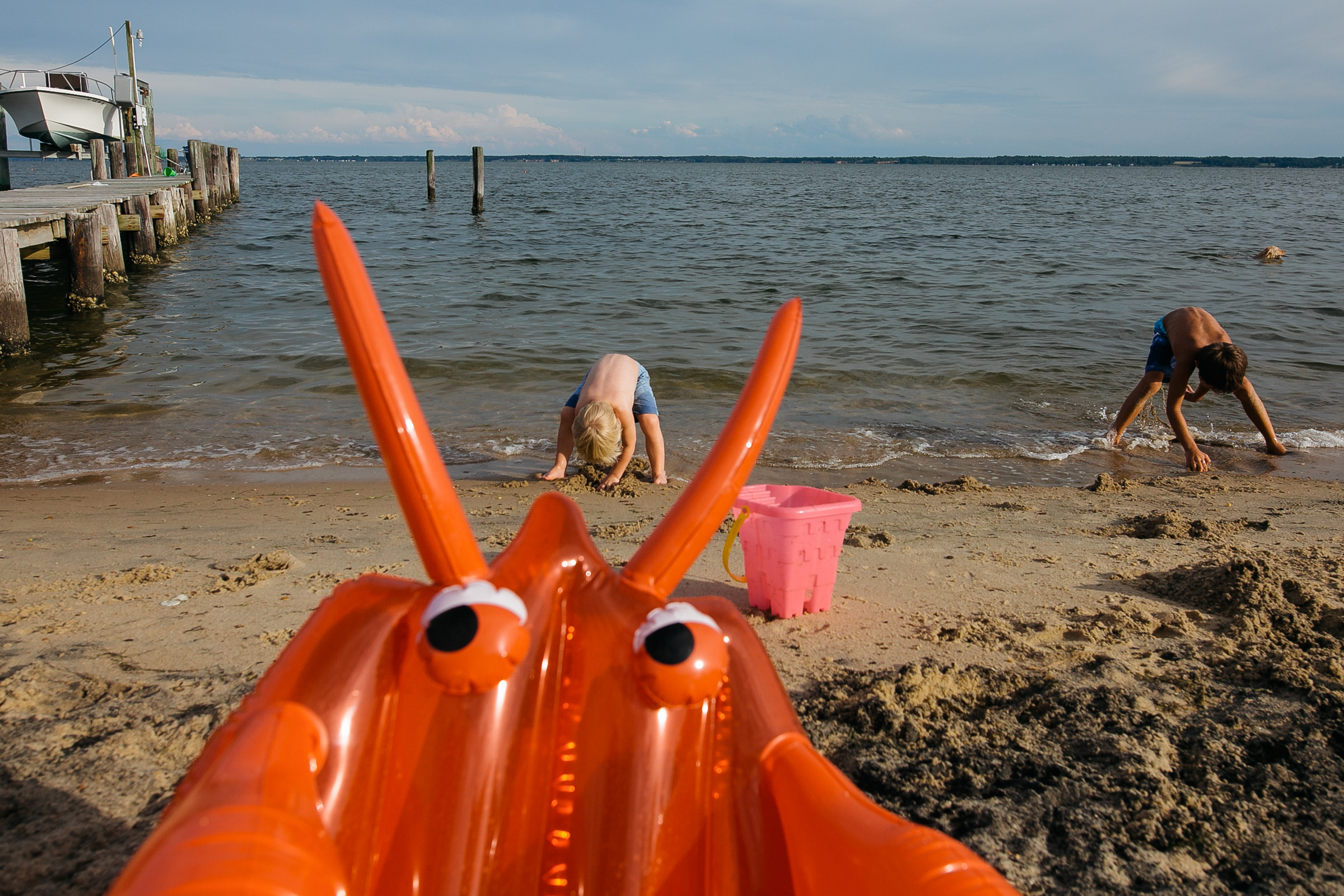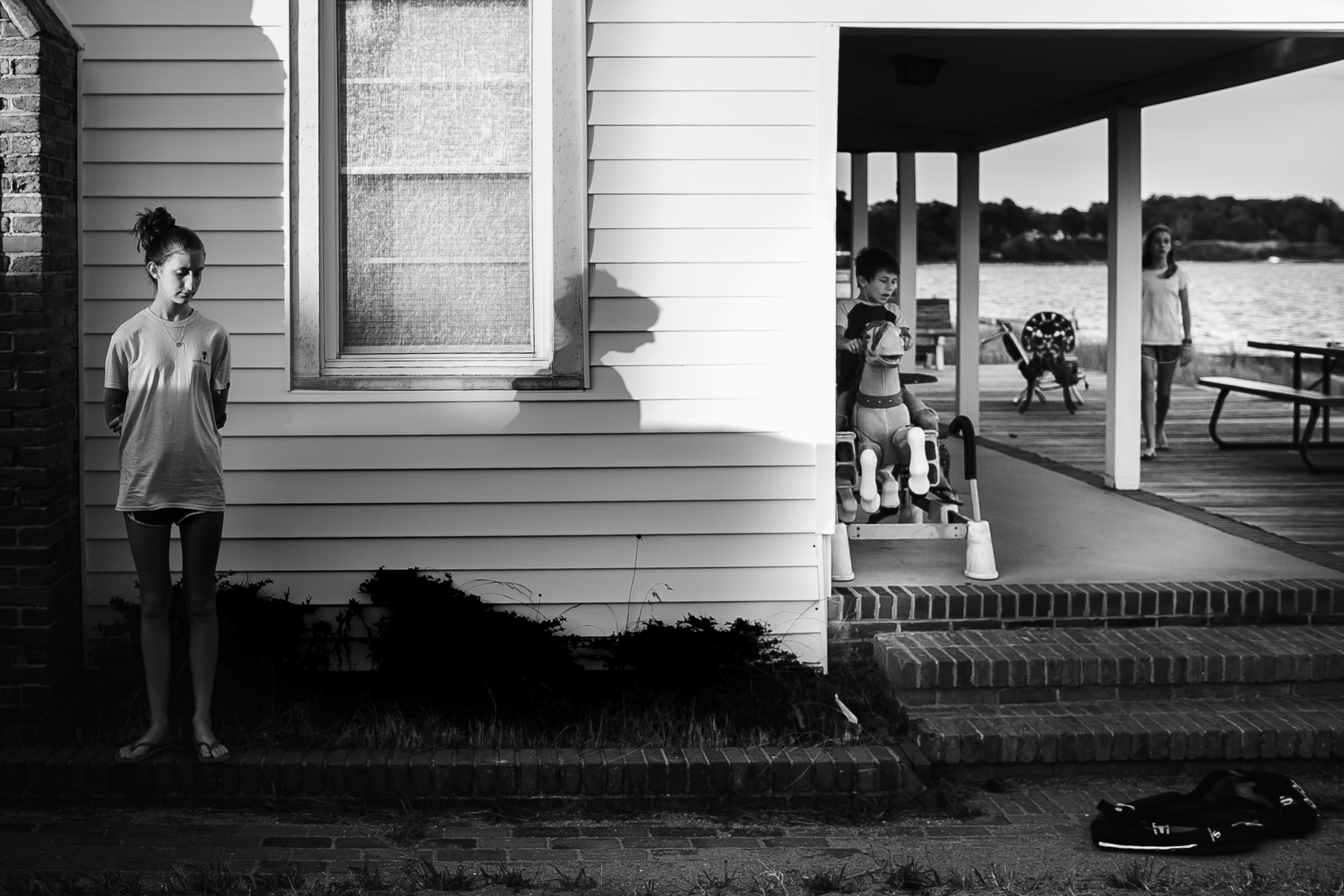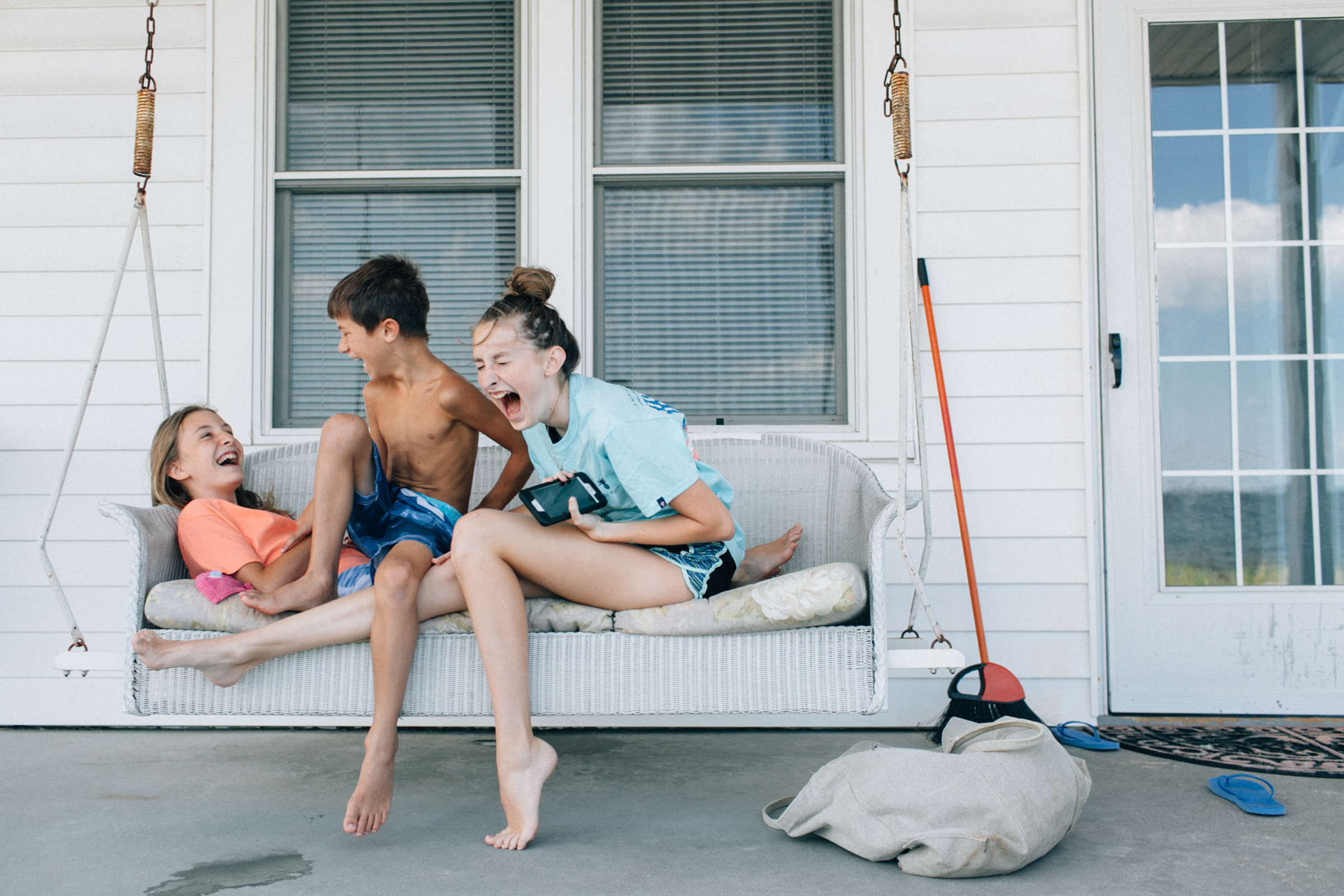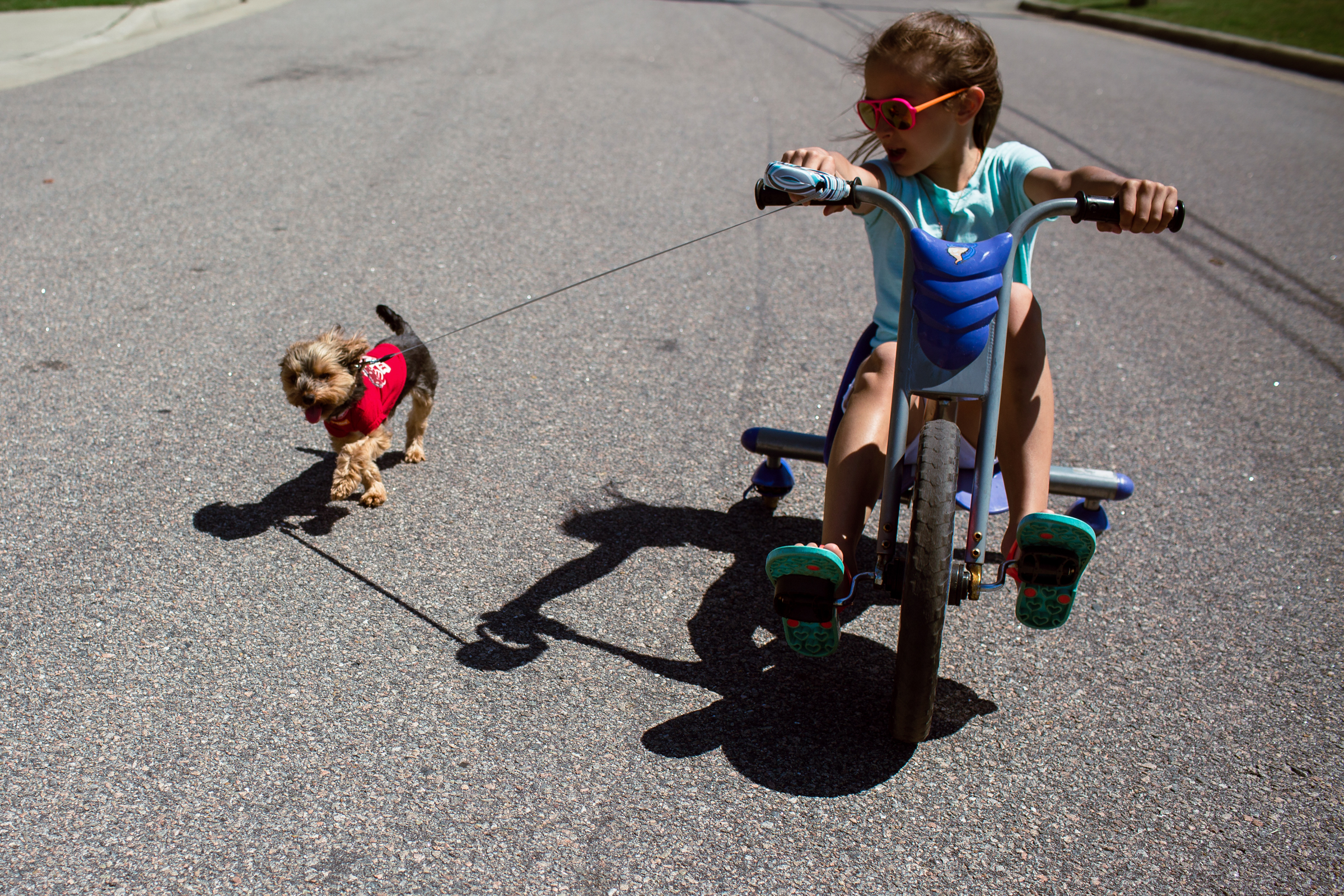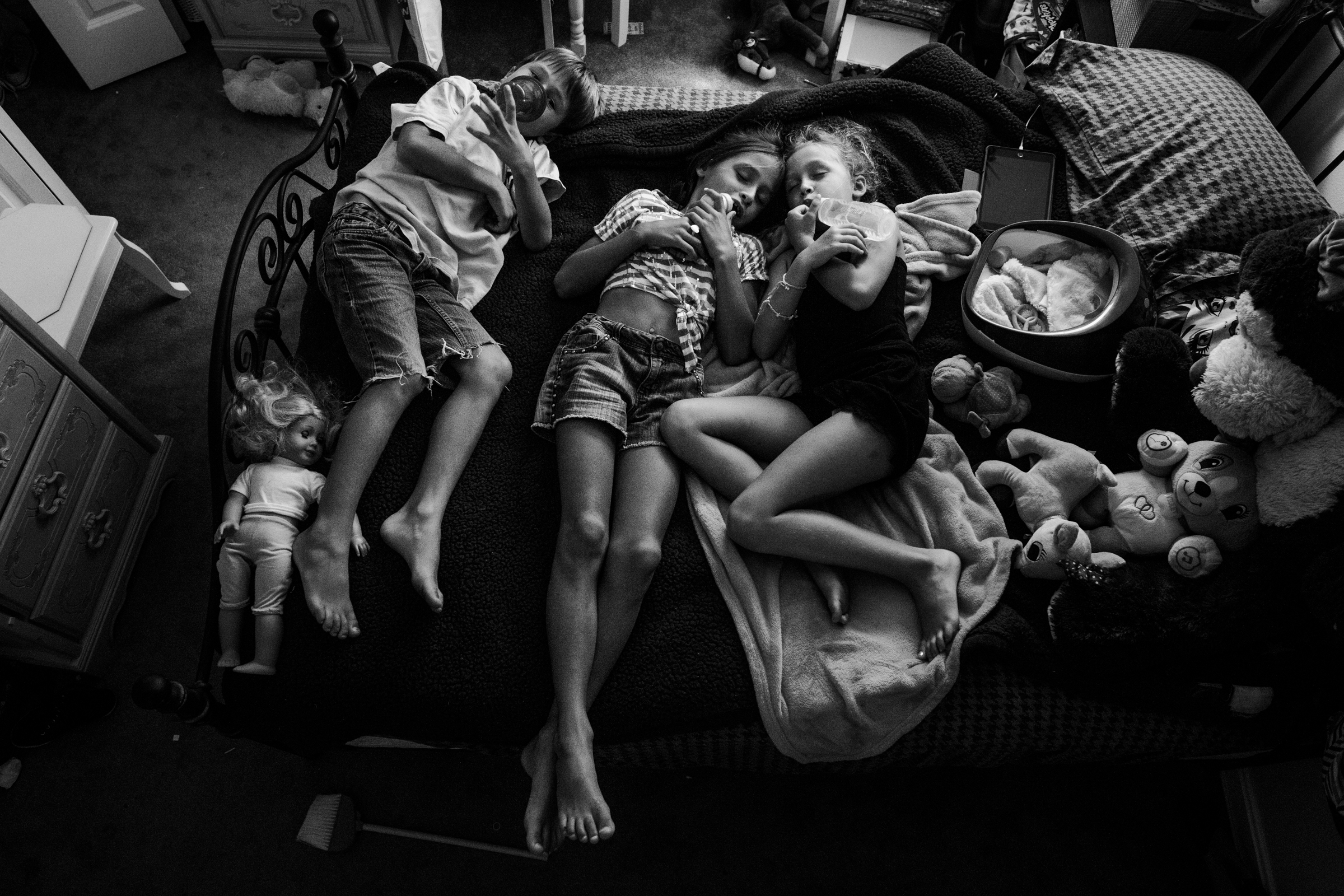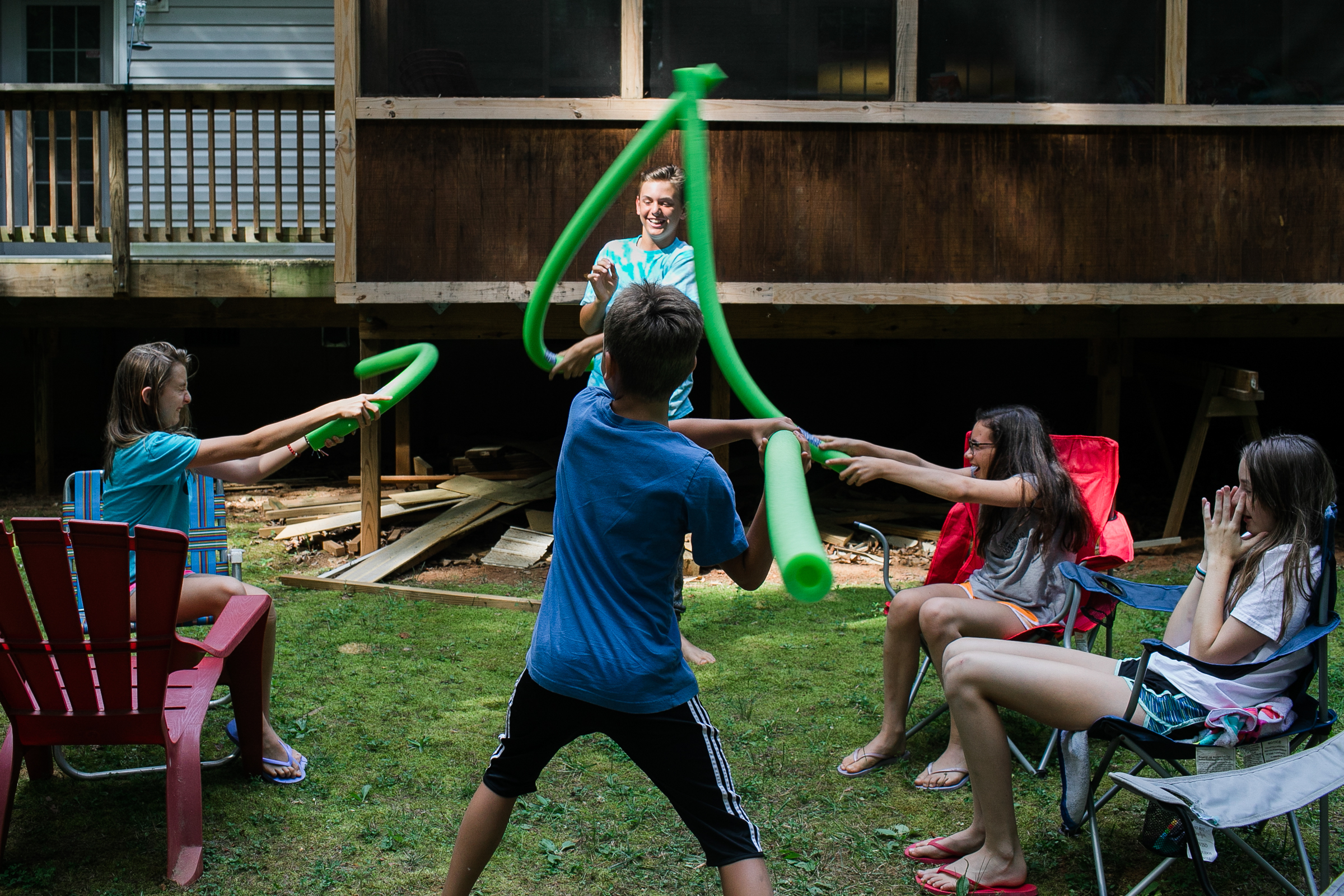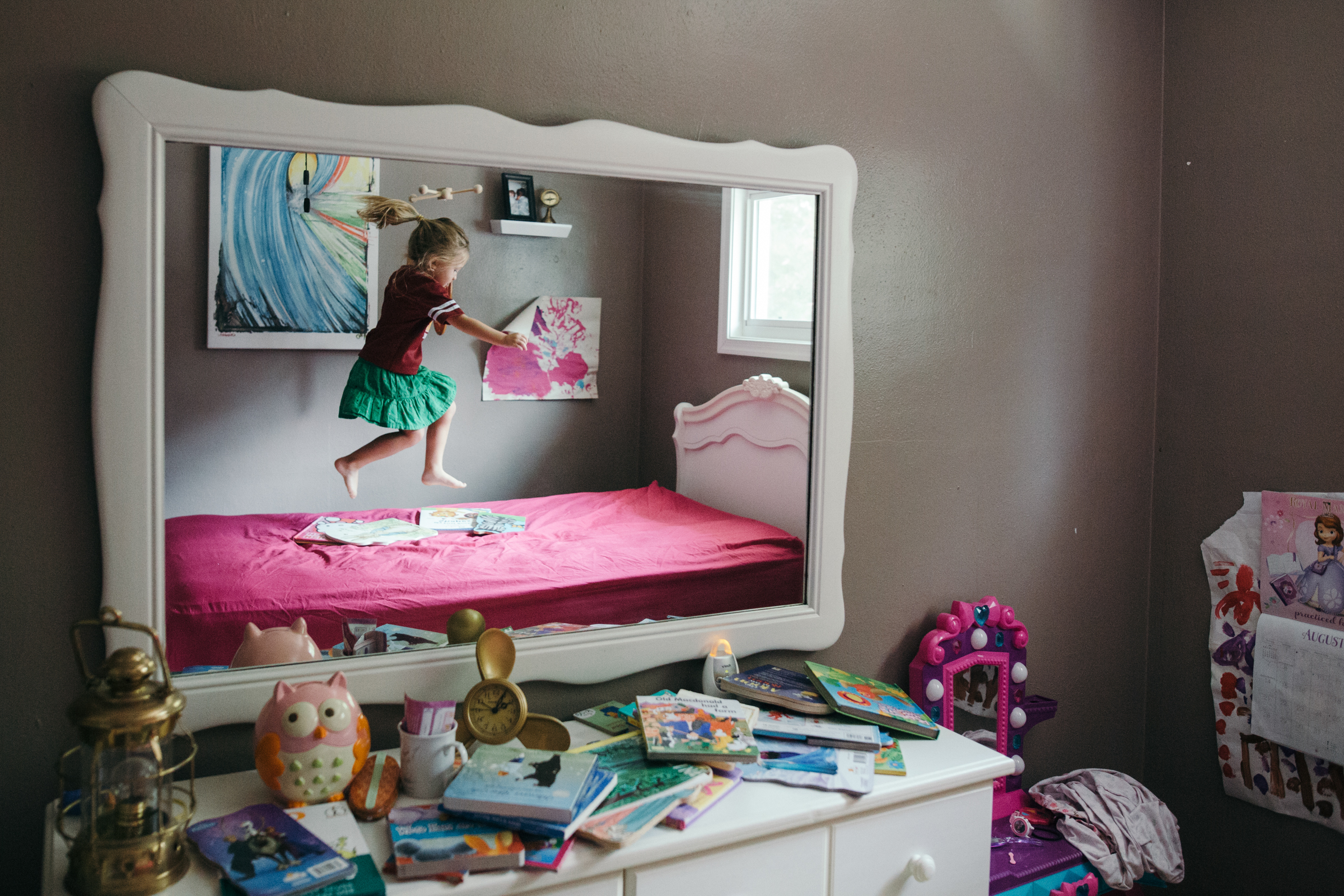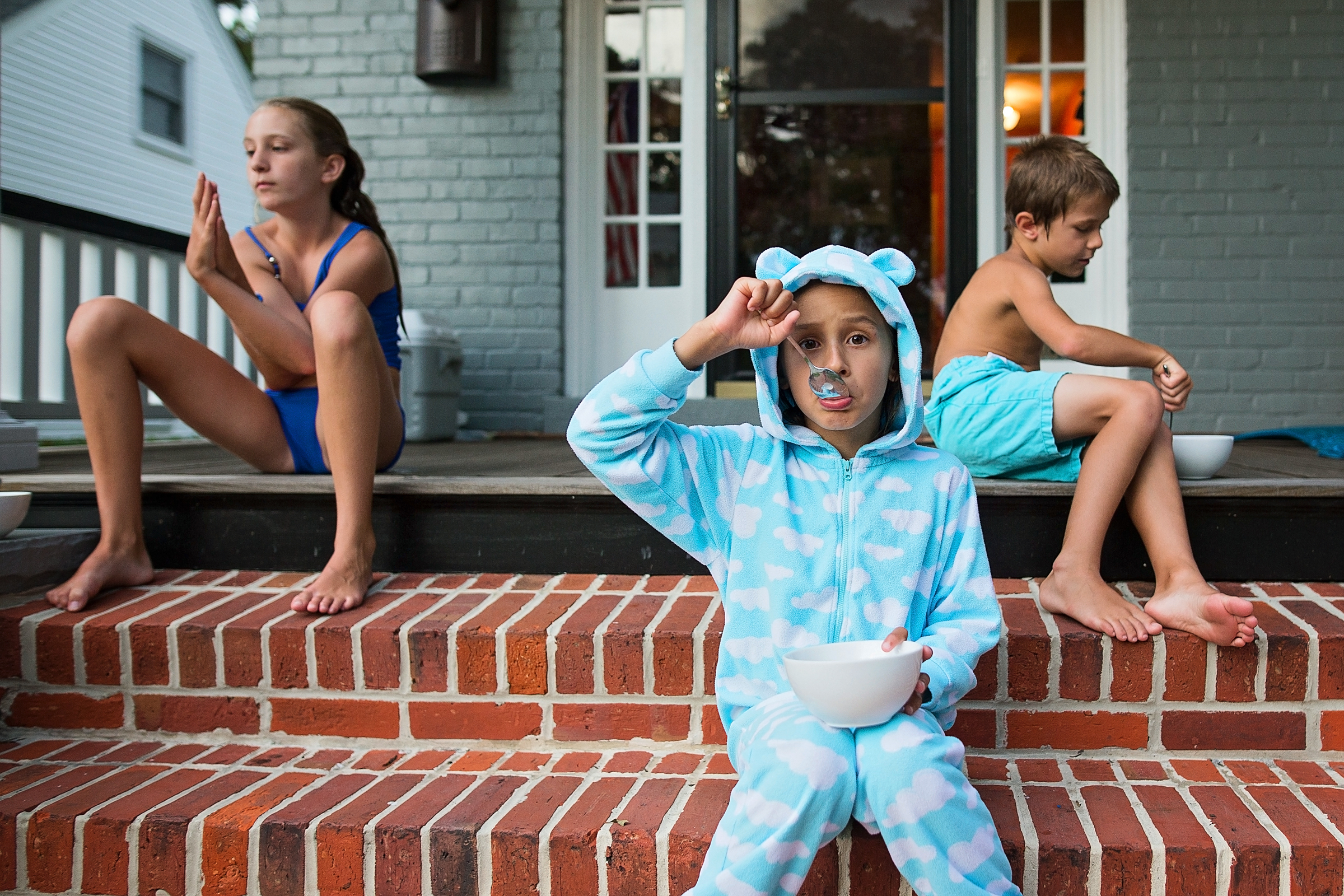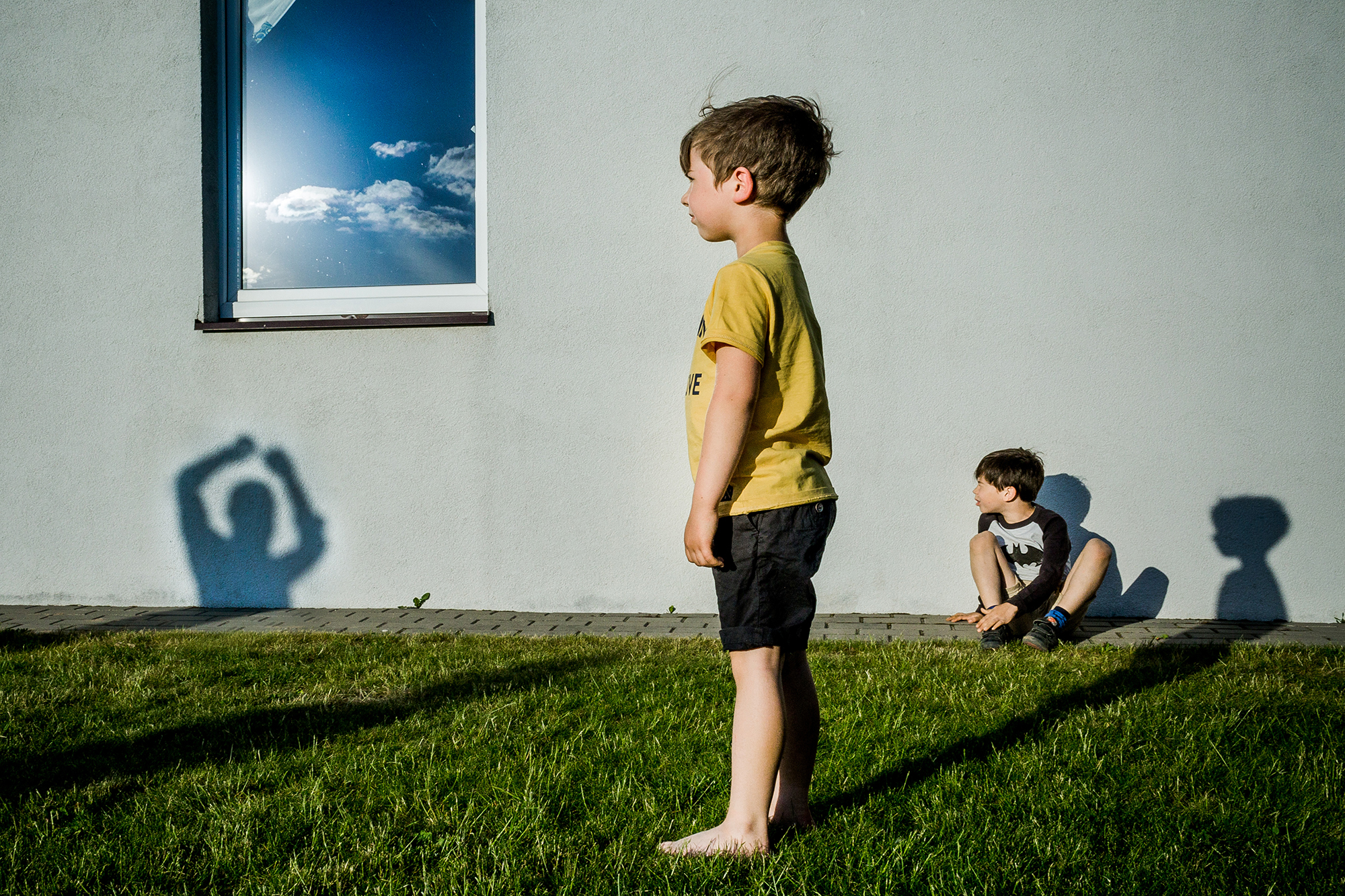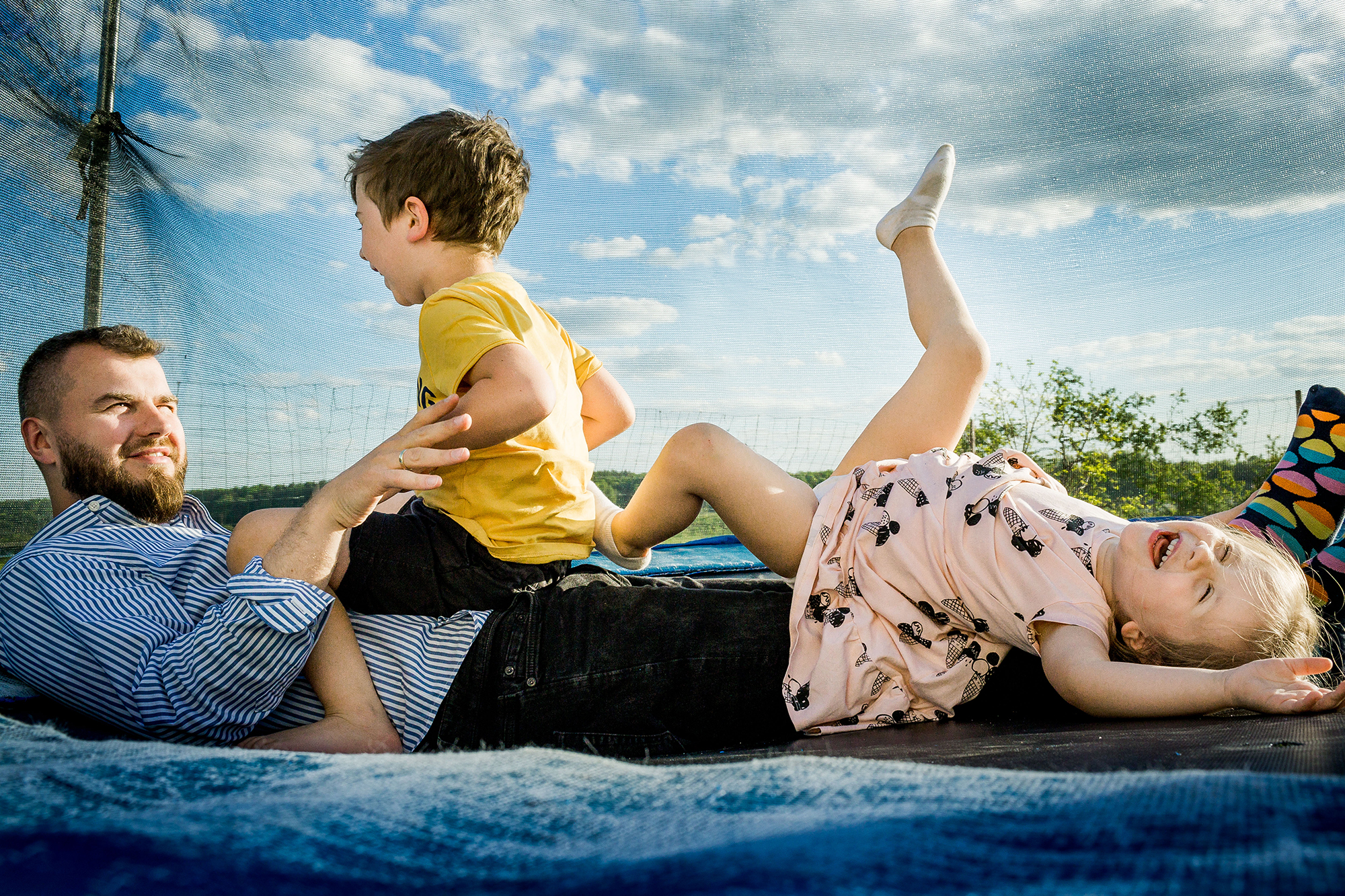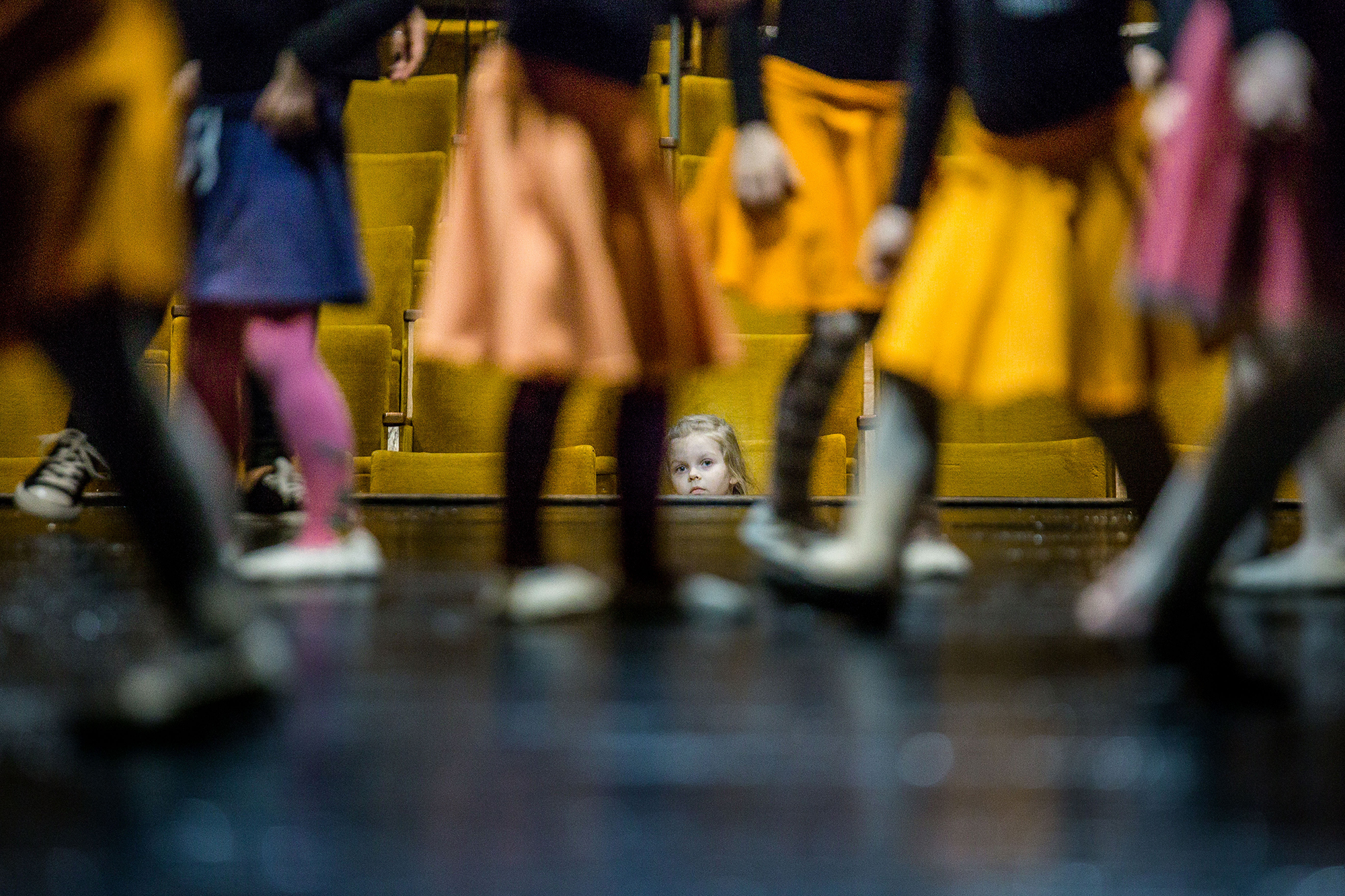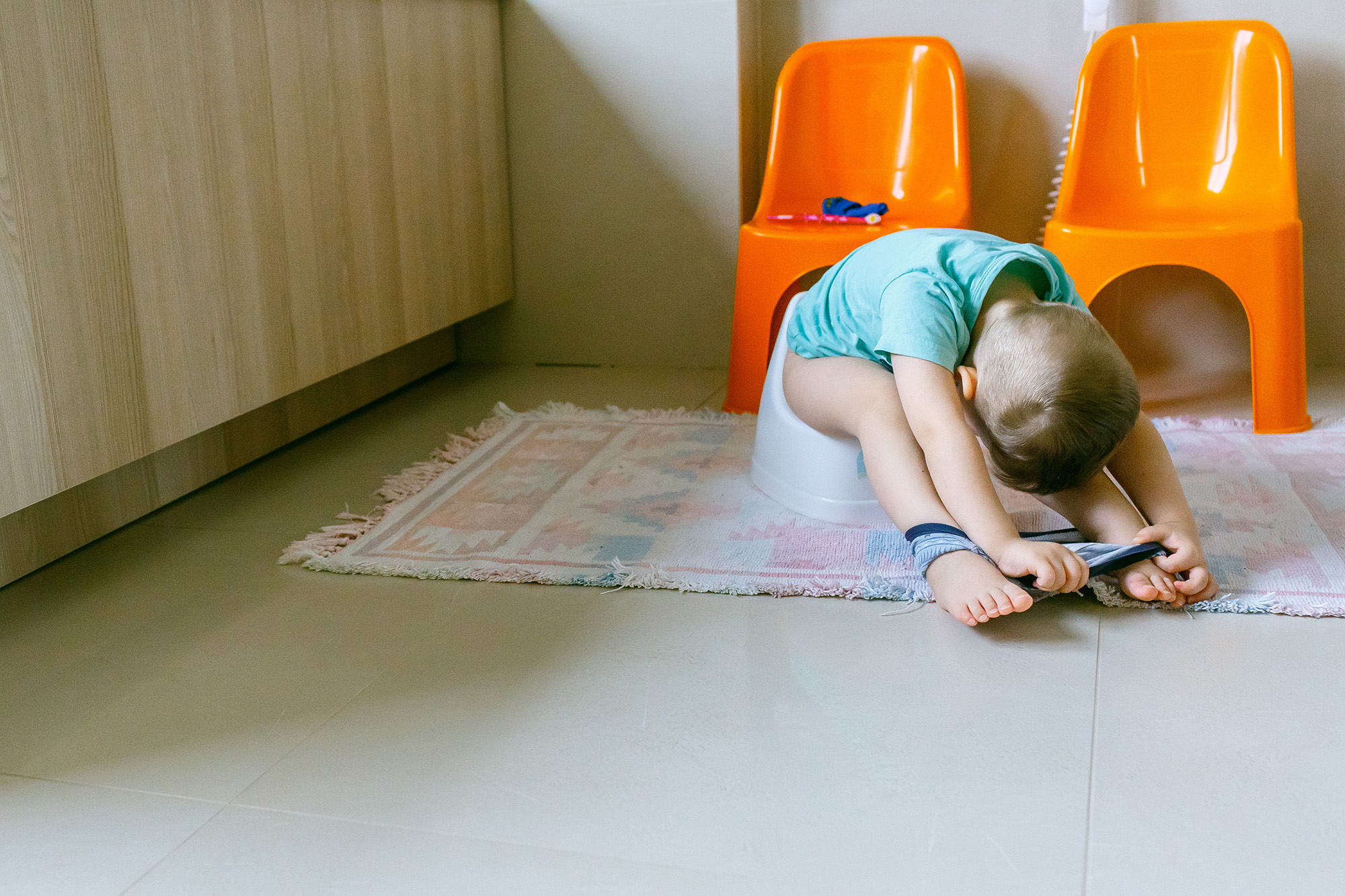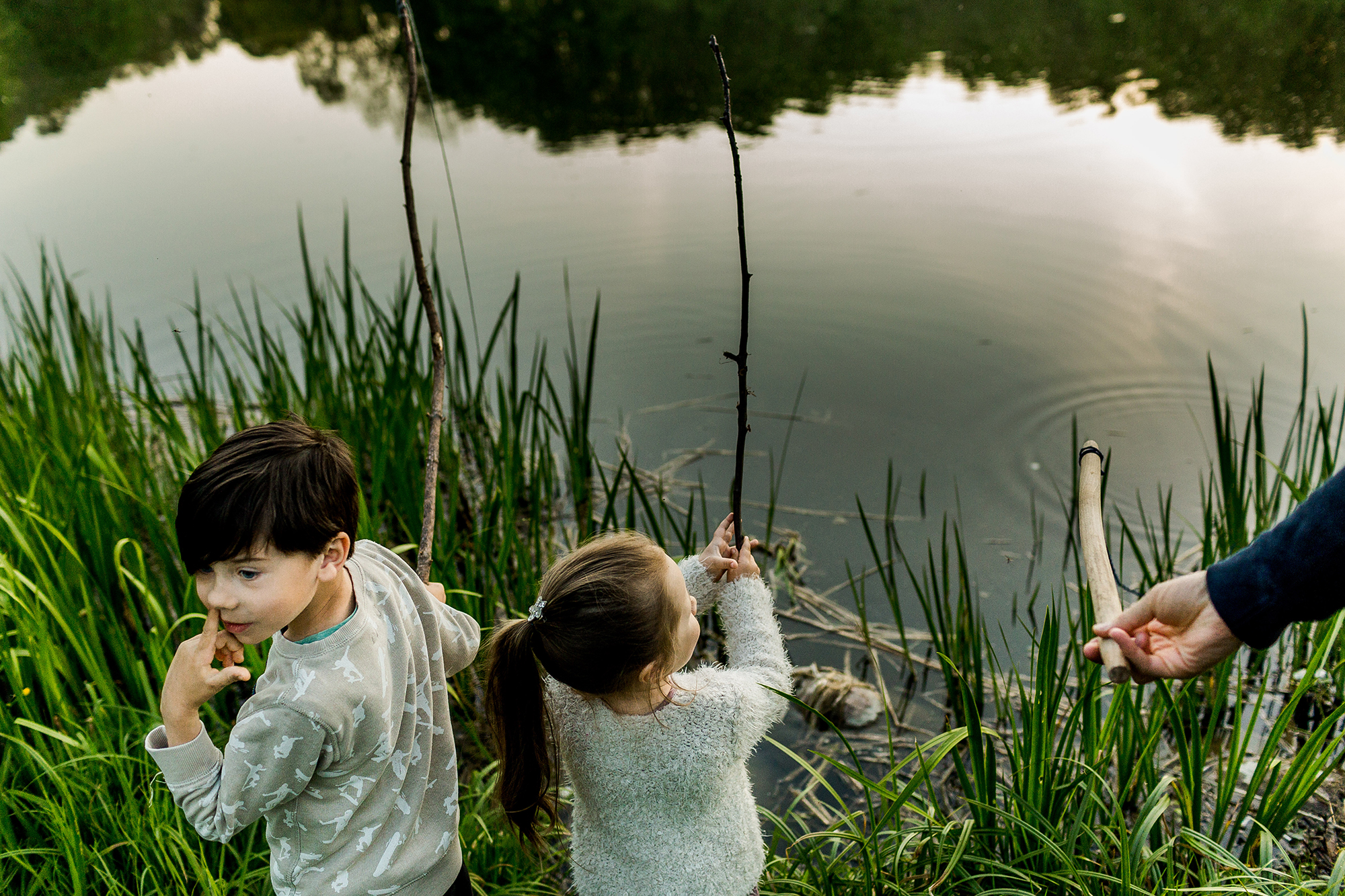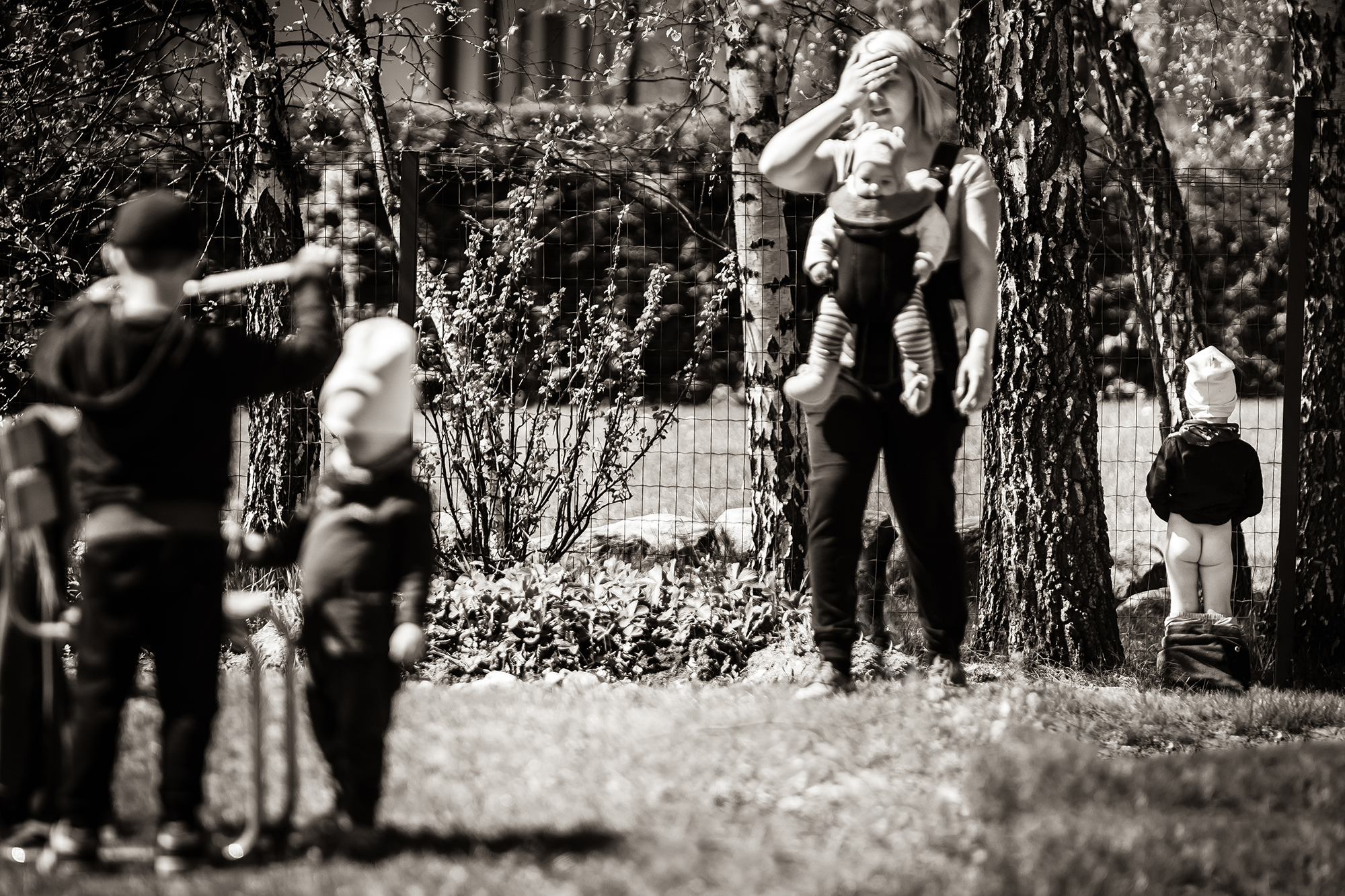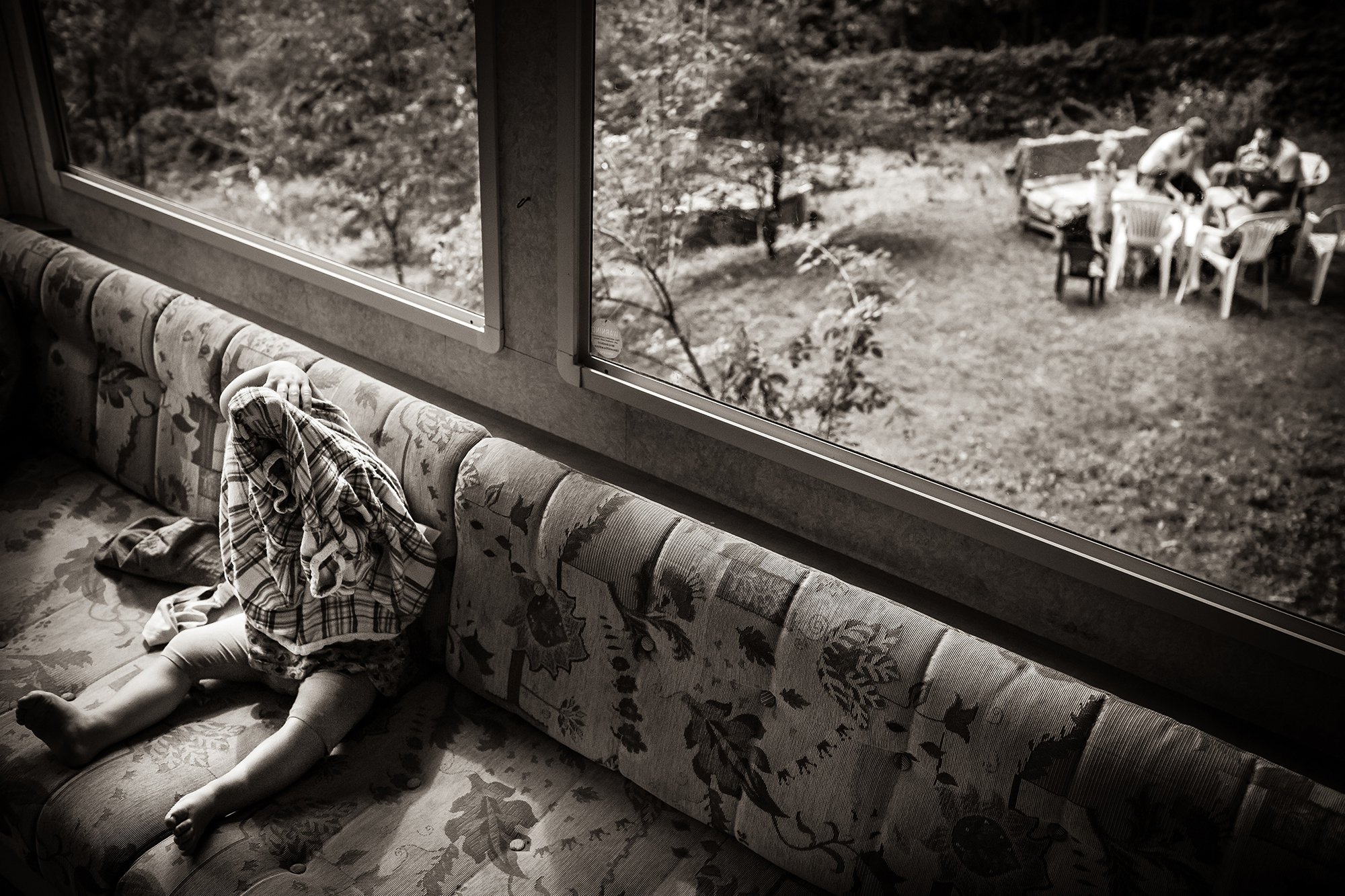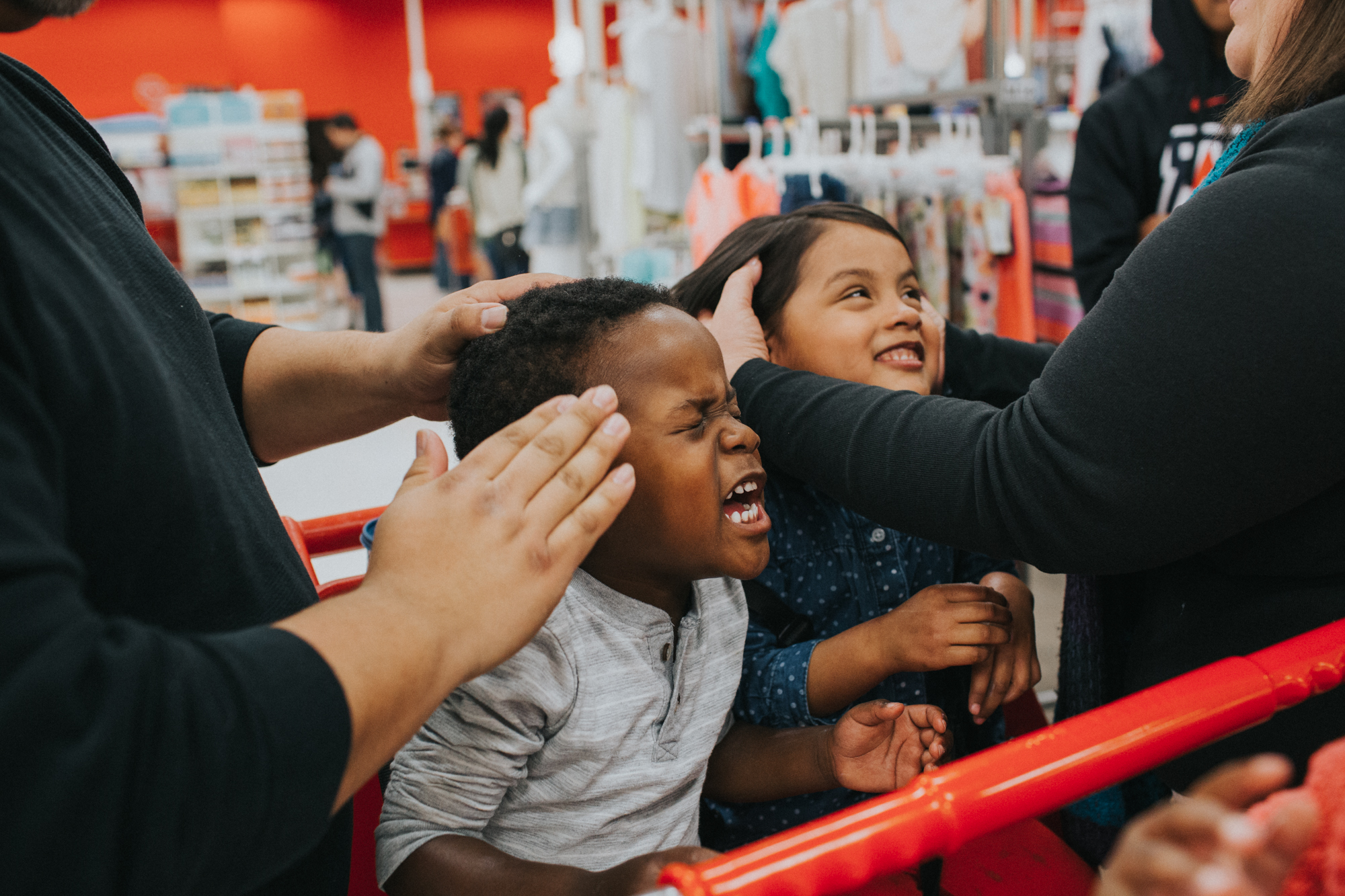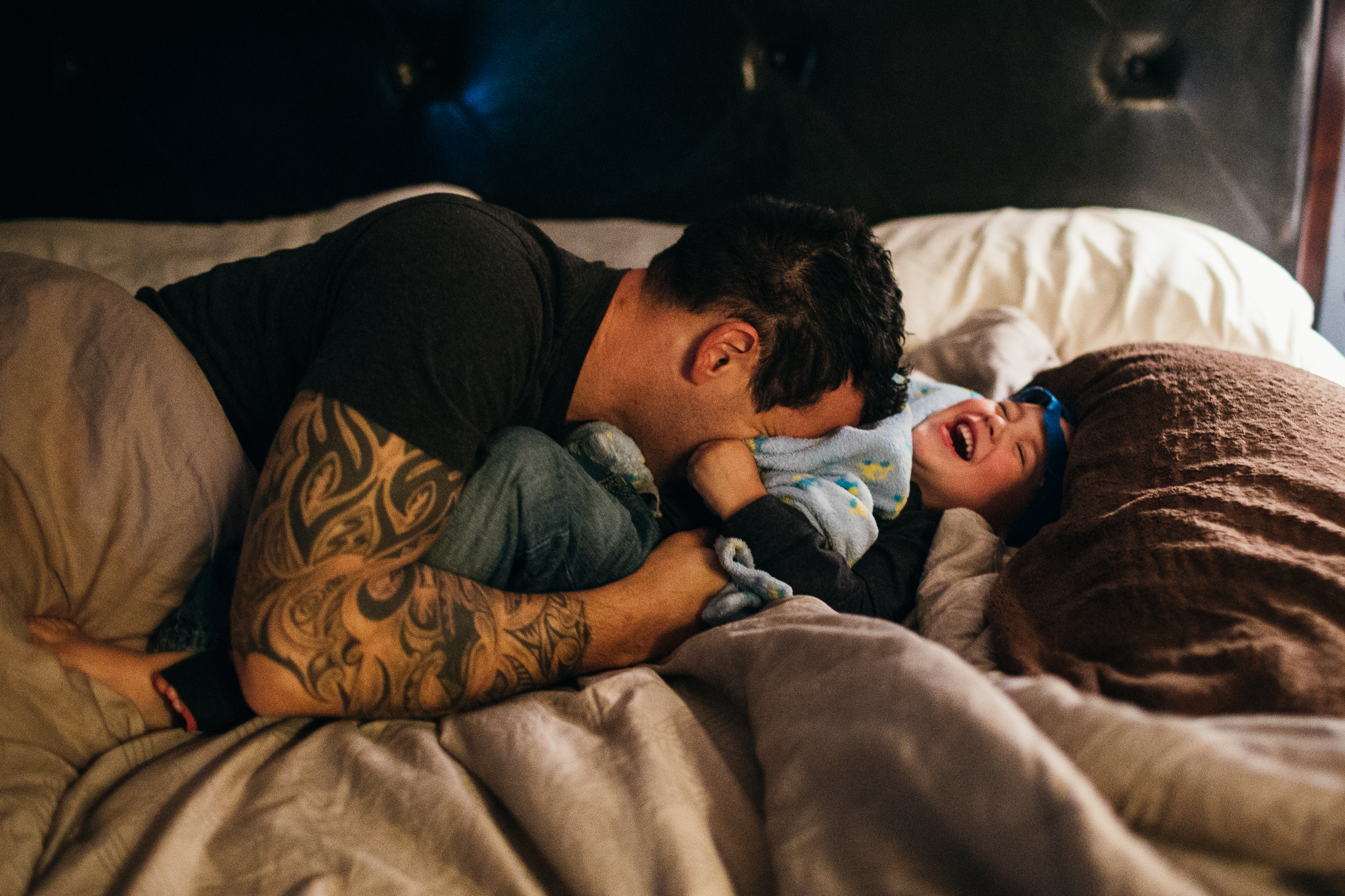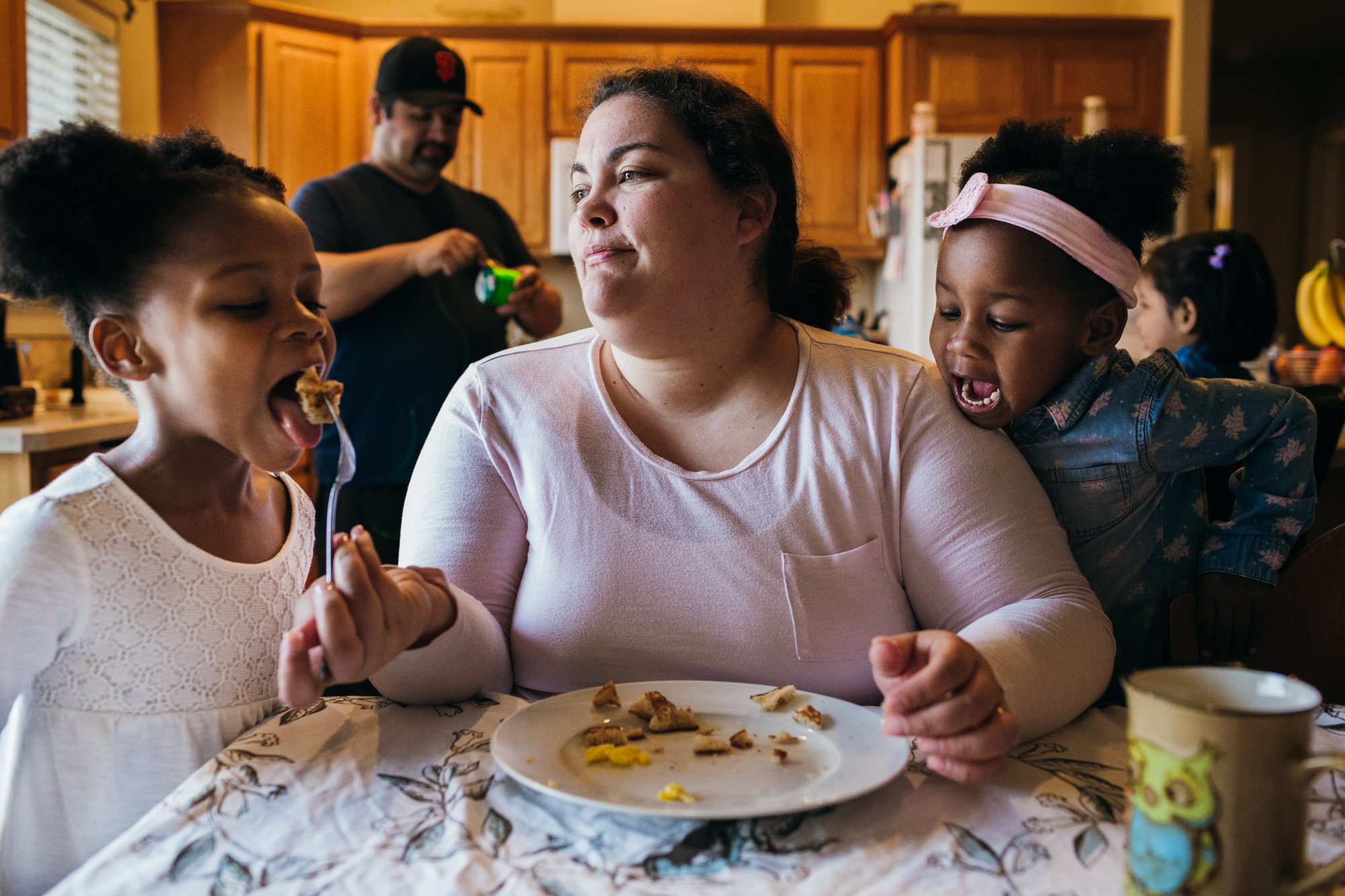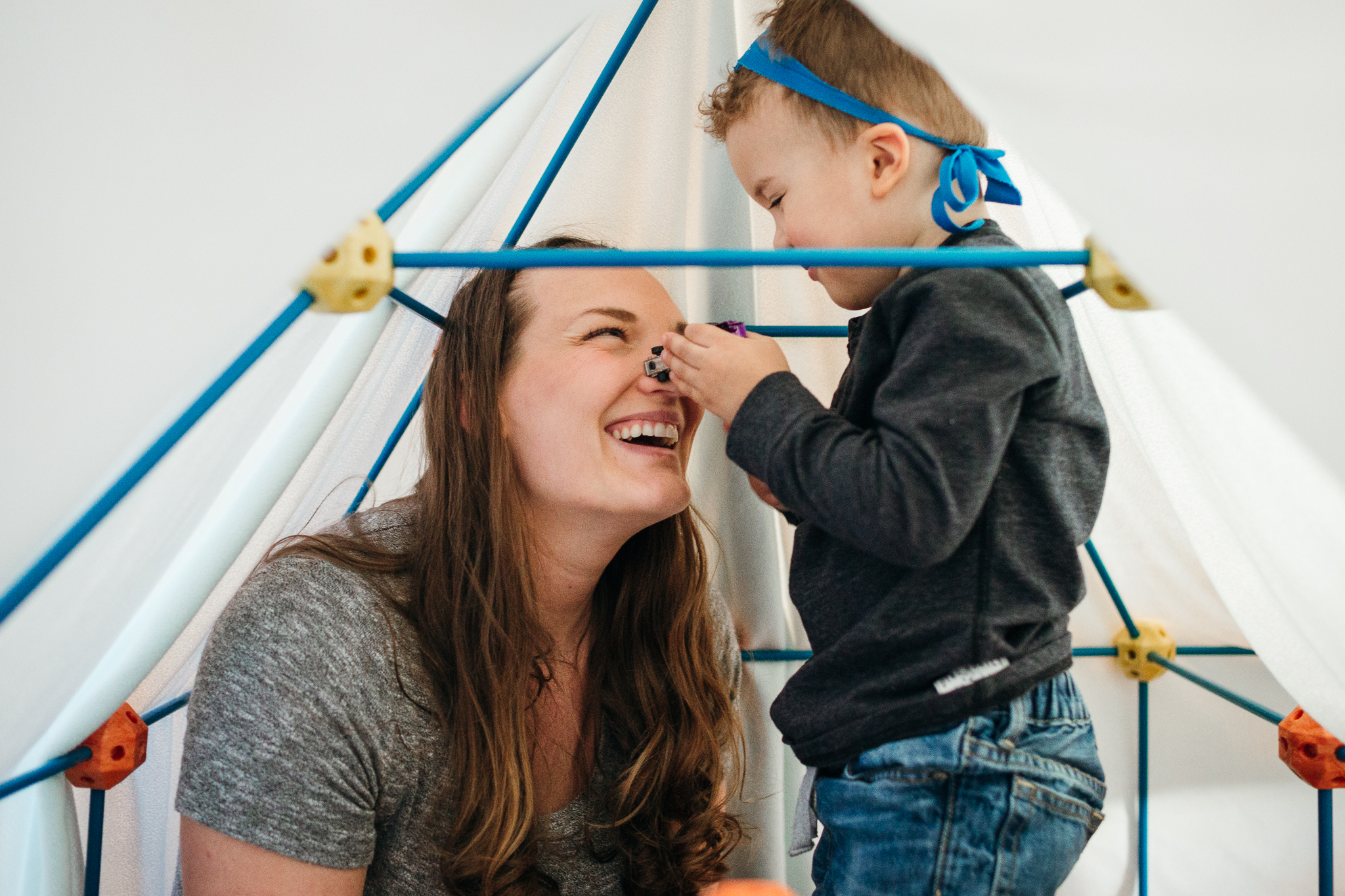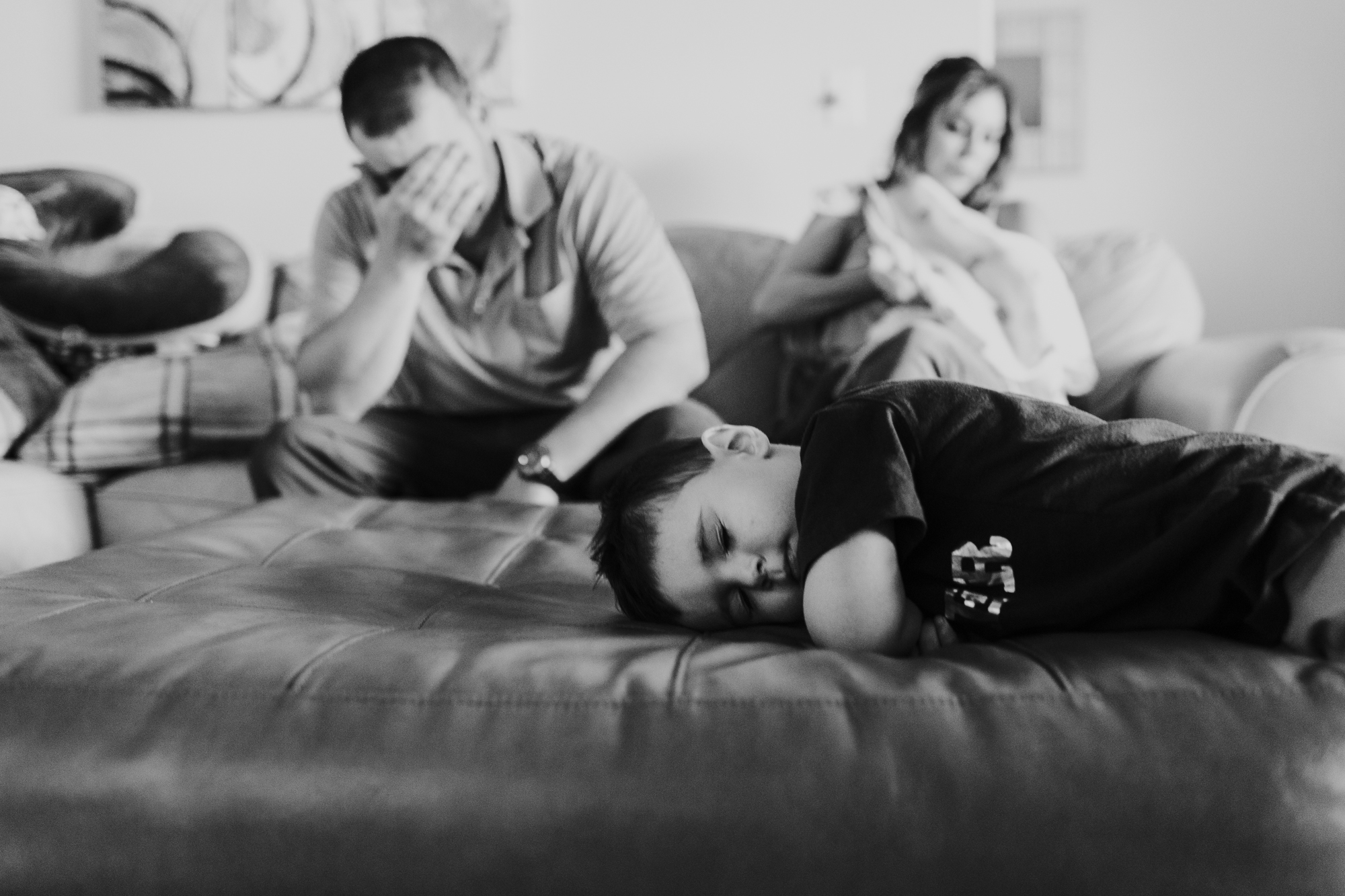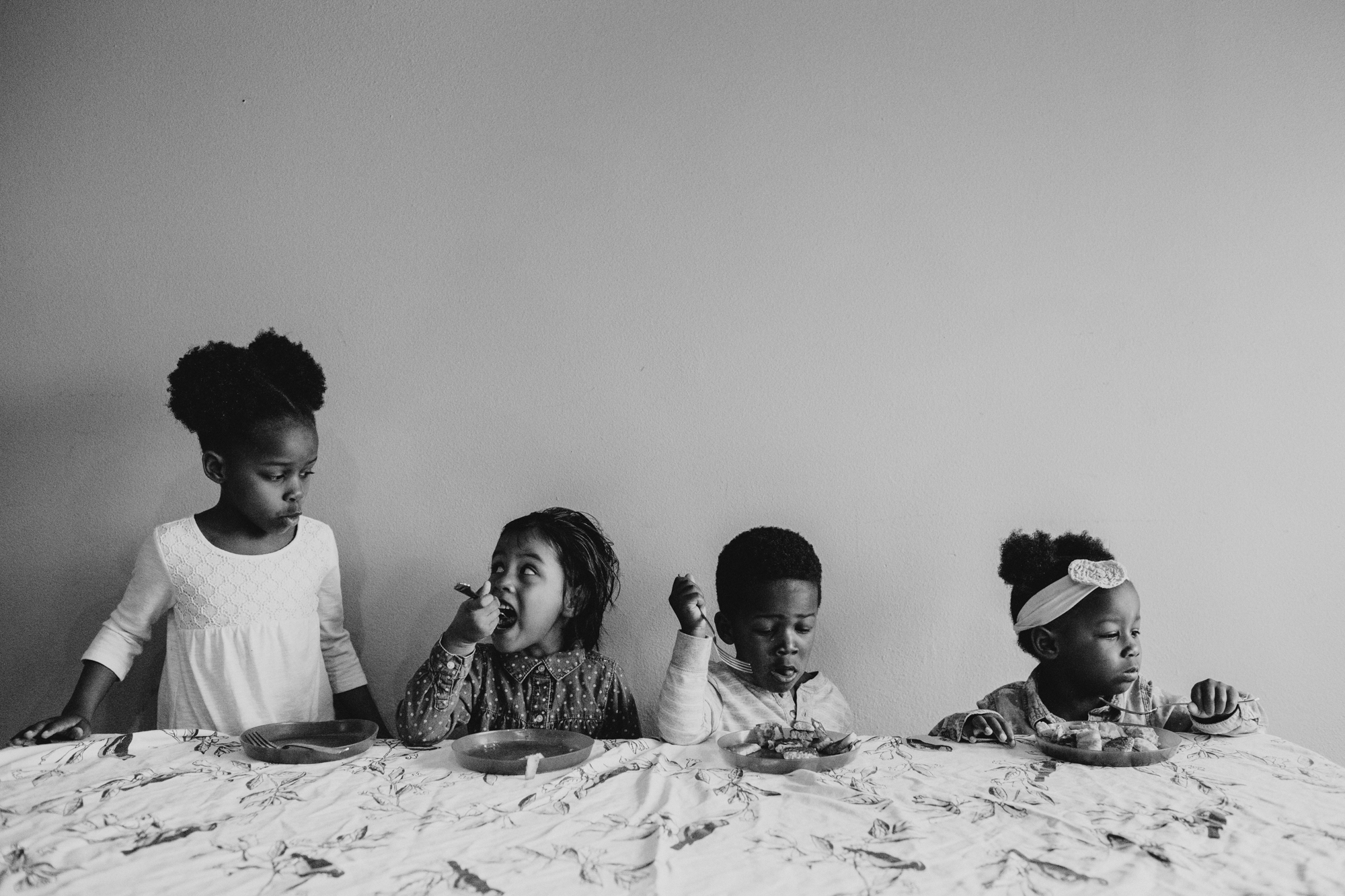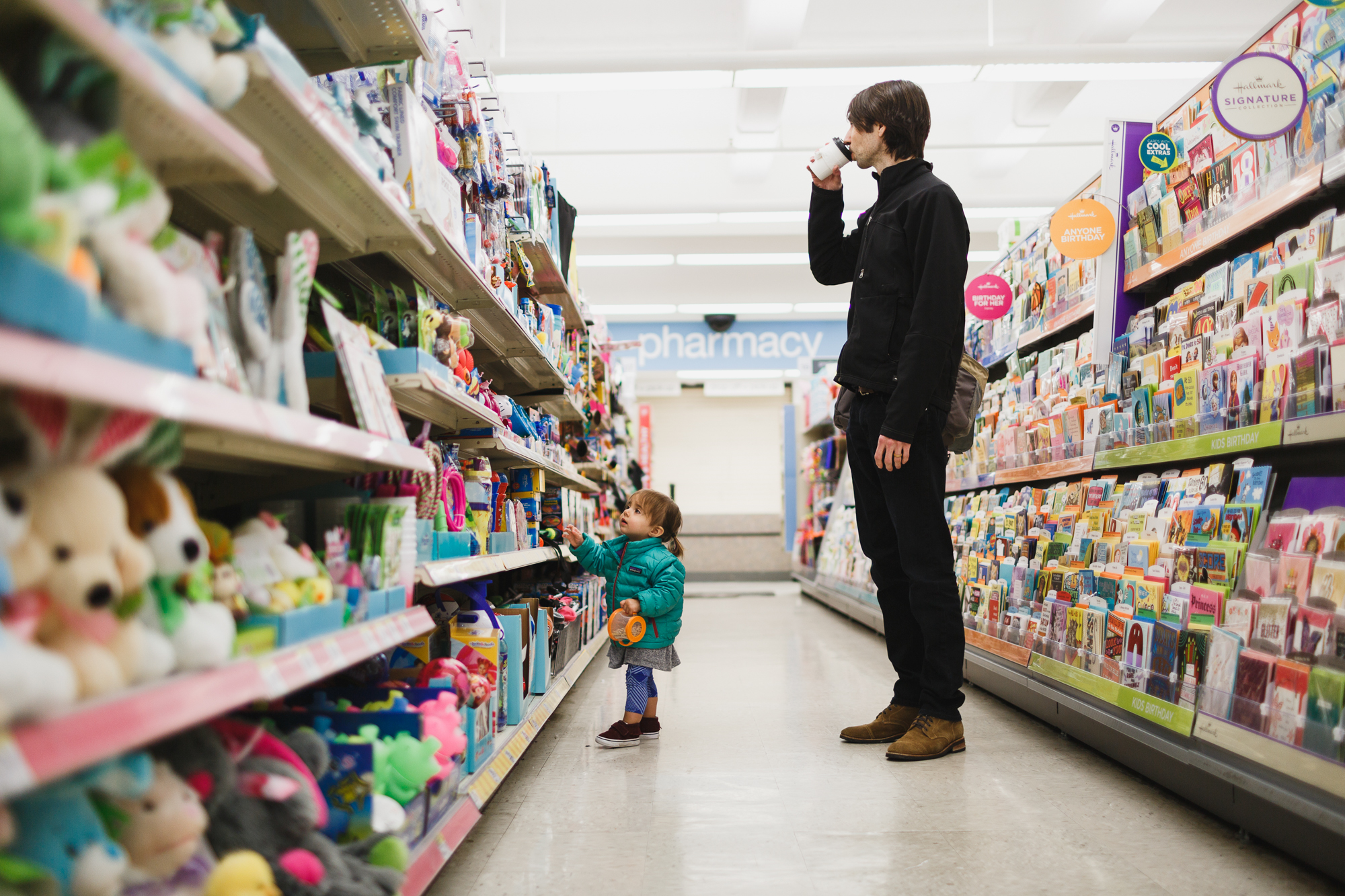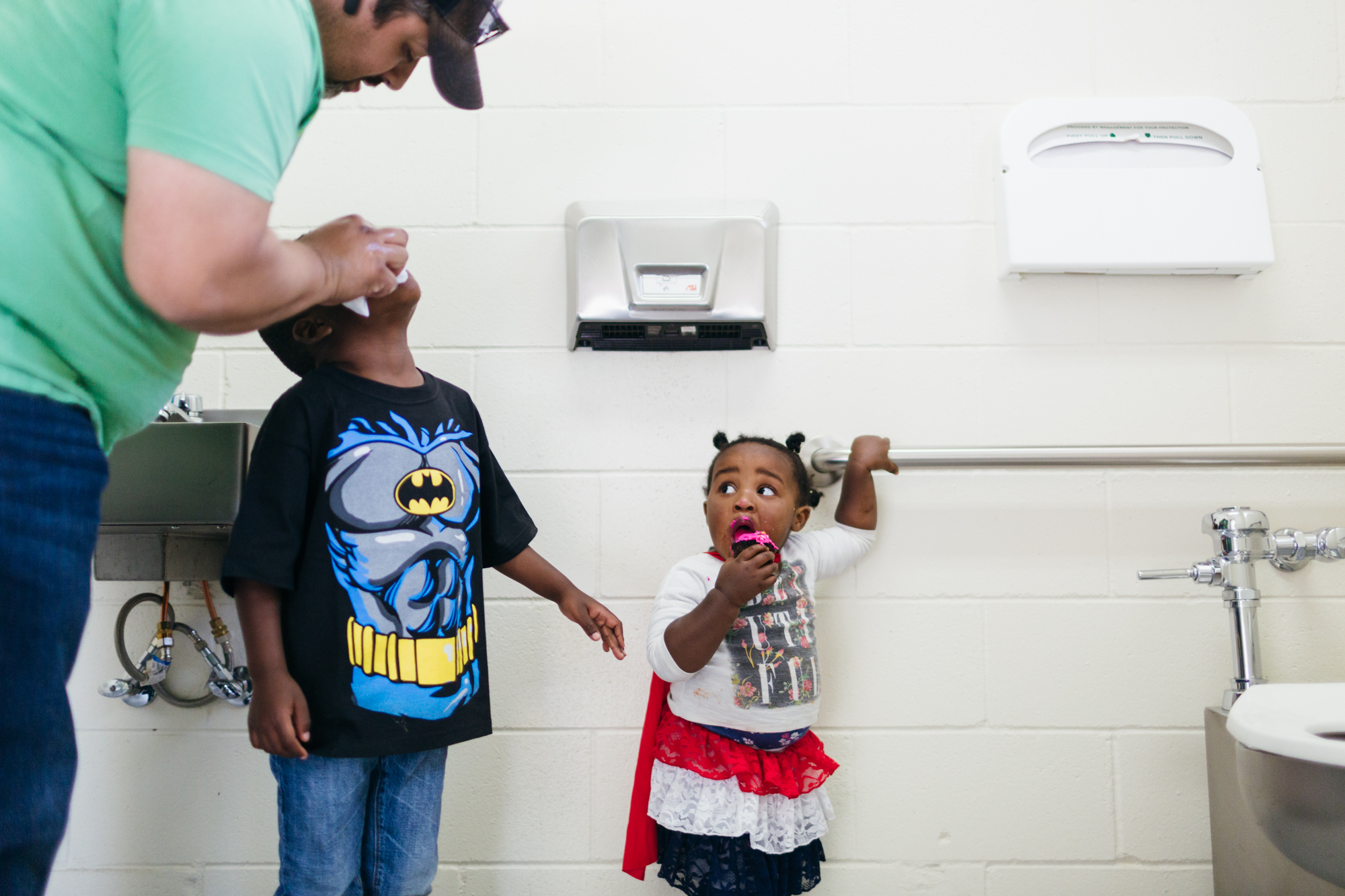Aleks Gajdeczka has plenty of childhood photos featuring her mom, but she only has two photos of her with her dad when she was young because he was the family photographer. She said “my dad was like a mythical being in our albums and boxes. Because of this, I have no memory of what it was like, being with him as a young child.” That led Aleks to start her #dadlife project after having her own children, so they would have photographic evidence of what life with their dad was like throughout their childhood.
You can find more of Aleks’ work at her website, Facebook, and Instagram. Here is what she had to say to our contributors about her project:
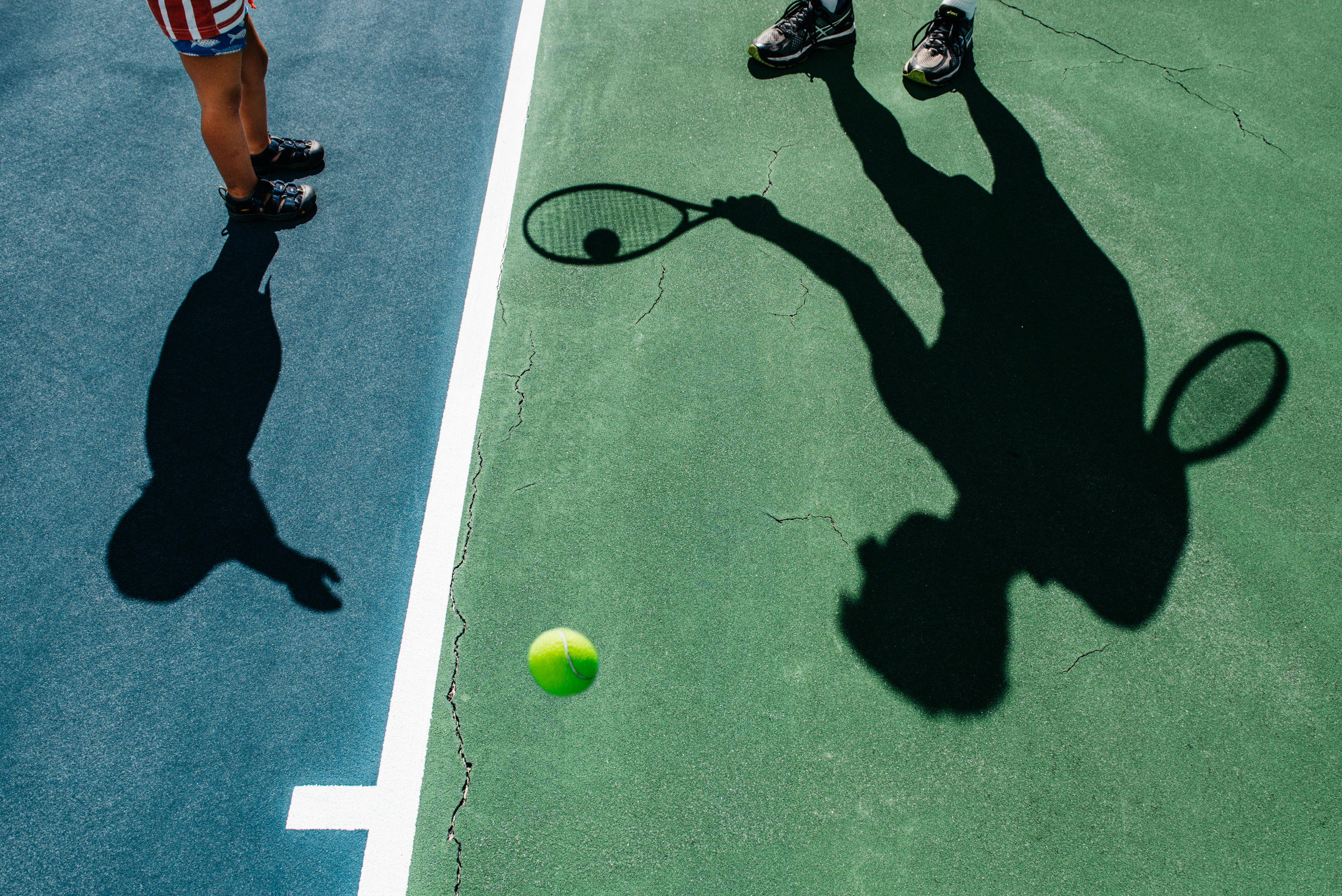 Leslie: Smiling from ear-to-ear over this series. I’m a big fan of #dadlife photos as well because my husband stays home with our children. How does your husband feel about being the focus of this project?
Leslie: Smiling from ear-to-ear over this series. I’m a big fan of #dadlife photos as well because my husband stays home with our children. How does your husband feel about being the focus of this project?
You know, it’s funny – I’ve never actually asked him how he feels about it. From long before the children were in the picture, he’s been a muse of mine. I mean, damn — he’s gorgeous, right? Over the years he’s grown so accustomed to me making photos featuring him, so for months he didn’t realize I was on to an actual project. I surprised him with the initial set of #dadlife images bound in a small paperback book for his birthday this year. He was pretty moved.
Has it inspired him to take more photos of you parenting your kids?
I think because I’m a professional with so much technical knowledge and practice at this point, he finds picking up my camera intimidating. But he does do it from time to time, and I know he’s thinking of #dadlife when he does. A while back he actually asked me for a quick tutorial on setting exposure and focus, so that he can now semi-competently and with some accuracy make a photo with me in it. I’m thankful for that.
Do you fear, that you will create a similar situation that you had with your dad not being in any of the photos because you are predominately behind the camera?
Isn’t this every mother/photographer’s fear? I do my best to get in the frame when I can – either through self-portraits or by setting my camera up for my husband (or a friend, parent, stranger, whoever) and asking them to click the shutter. I’ve become bolder with this over the years, because I know I want to be in the proverbial memory box when my children are grown. I’m actually about to do a Day-in-the-Life session trade with a favorite semi-local photographer of mine, and you better believe I’m going to ask her to keep me and my relationship with the children in focus to the extent it’s possible, since I don’t get the opportunity as much. I couldn’t be more excited to experience the other side of the coin.
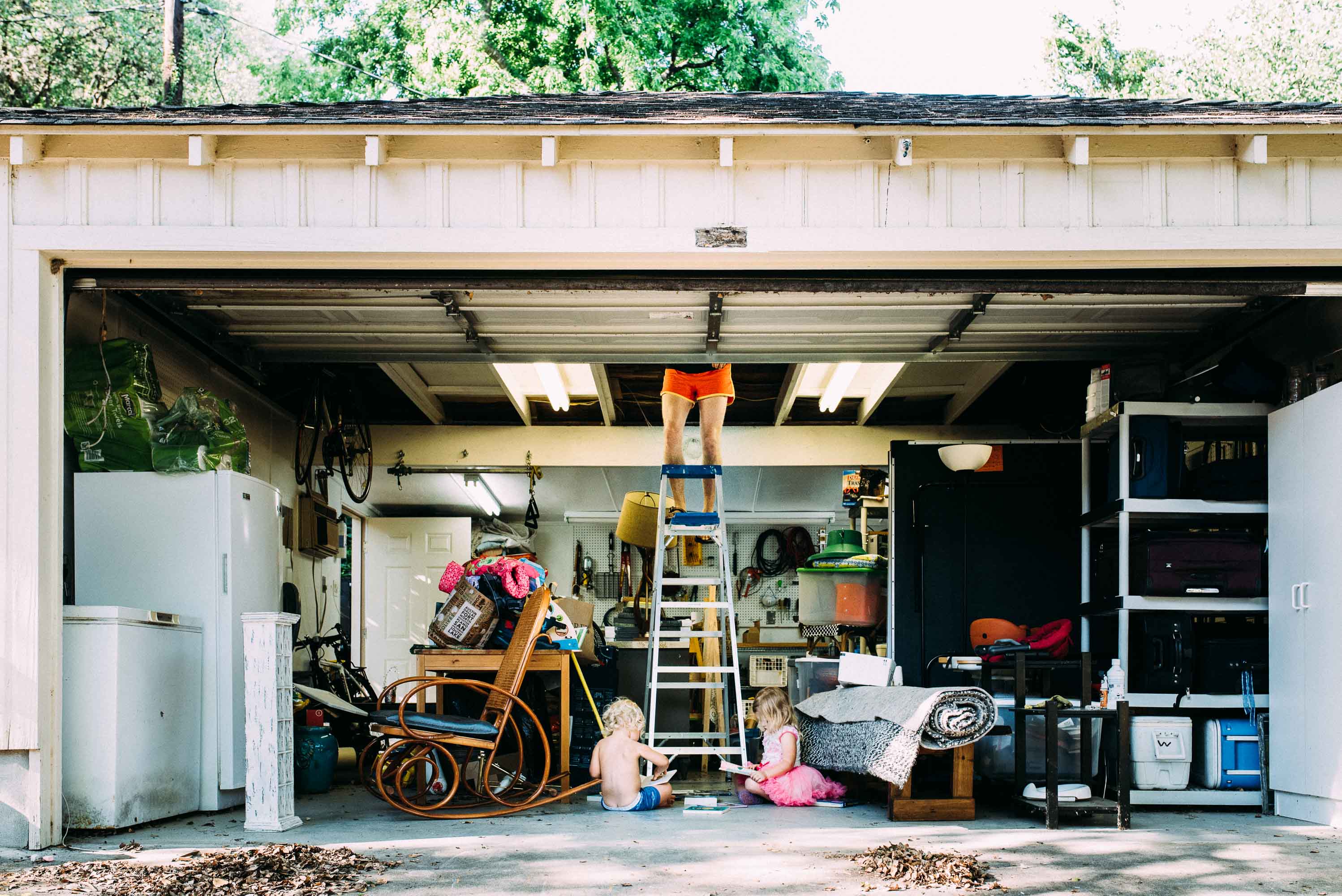
Chrystal: I love that you are doing this with a specific theme in mind. Do you do self portraits too for a mom version?
I’m so glad you asked this. My first personal project – and my absolute favorite to date – is a self-portrait series called Babies & Bourbon: You Can’t Mom Alone (https://aleks-gajdeczka.com/babies-bourbon). It’s a semi-humorous view into my experience parenting two young children, who (for better or worse) are as oppressively present at every moment as they are totally adorable. This project, and the introspection that went along with its birth, changed the trajectory of my life in more than one way.
Also your composition and movement are incredible! What artists or classes have given you inspiration?
Bar none, the most life-changing class I’ve taken was one called Storymaking with Meredith Novario, over at CM. It challenged me to think about the motivations that drive me to make photos, and find the sweet-spot intersection between how I see the world, how I want the world to see me, how I see myself, and the story I’d like to tell. Once I got through all of this thinking, I came out the other end a family documentary photographer hellbent on helping my clients appreciate and feel pride in the funny, ridiculous, unpredictable, and humble nature of every day life with kids. Meredith has since retired the class, which is a real loss for the rest of y’all.
I’ve picked up some solid technical skills from Kirsten Lewis, and have drawn much inspiration over the years from greats such as Sally Mann, Elliott Erwit, and Henri Cartier-Bresson, as well as contemporary artists like Martin Parr, Nikki Boon and Justyna Mielnikiewicz. I’m drawn to the work of artists who aren’t afraid to make a busy, complex photo, and ones who have a bold message to deliver through their work and just don’t give a f*** what anybody else thinks.
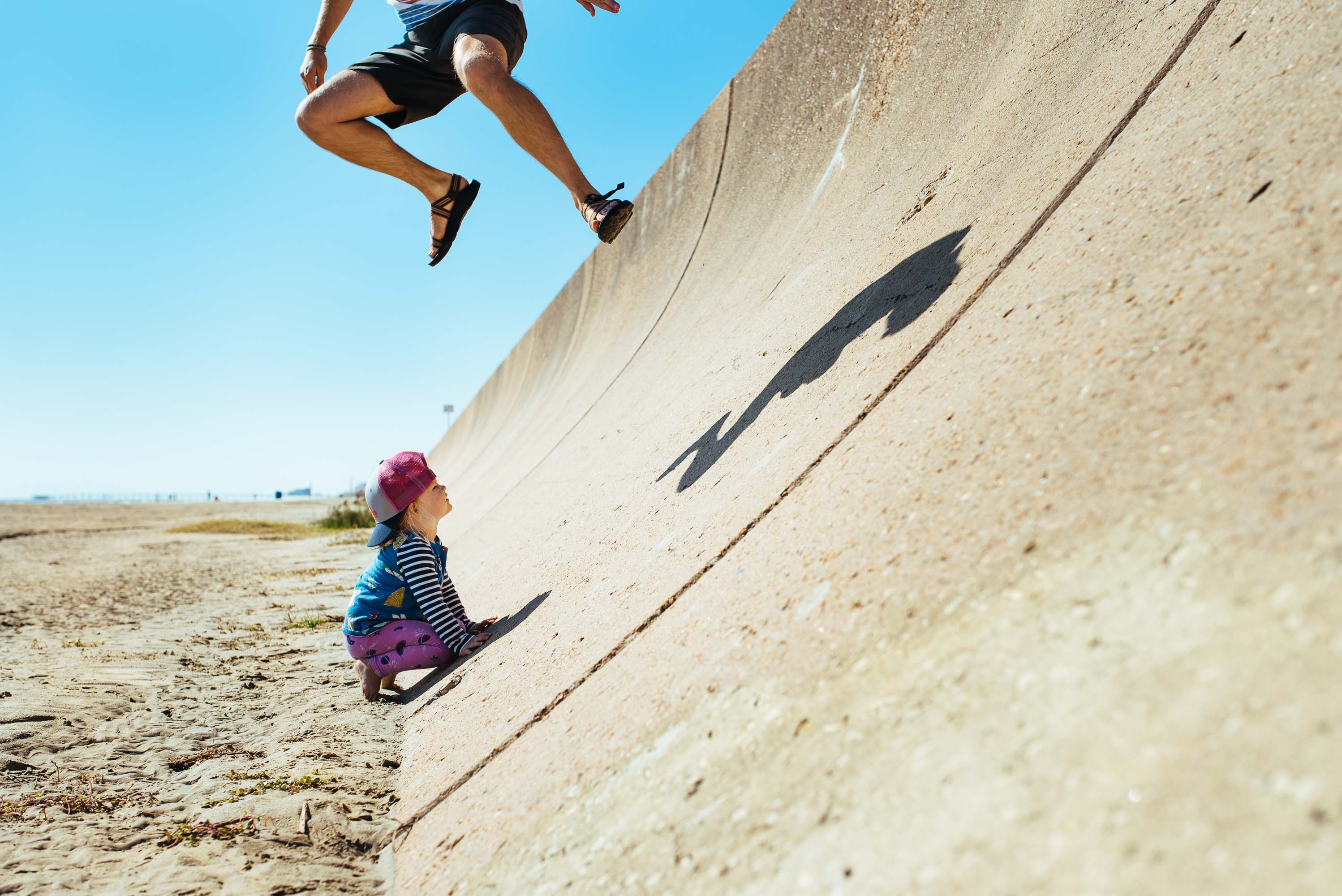
Heather: You have completely inspired me to take more pictures of my husband! These are all incredible. Do you have any tips on finding the humor in a moment and capturing it?
Breakfast beer? Just kidding, kind of. Parenting is nothing if not humbling, and being able to relax and roll with the ridiculous predicaments my children put me in has made me a happier, better person. First, keeping a camera handy and set to “average” exposure settings, plus pushing yourself to shoot your everyday life daily – or at least, say, every weekend – can go a long way. Some of these photos were made with some foresight – but most were created thanks to me always having my camera in my purse, on the kitchen counter, or in the car with me. Second, I’d say that giving yourself permission to allow children (and – let’s face it, husbands) to make strange choices that may result in mess or tears, can put you in the front-row observer’s seat for some of the most hysterical scenes as they unfold. That’s been a big one for me. And third, when you know what’s important to you – and what you want to preserve – it’s easier to notice quickly when it’s revealing itself. Once I had my husband in my head as father/muse, I began to constantly see his incredible, tender, gentle, and funny interactions with our children, which made photographing for the project easier. Seeing begets seeing.
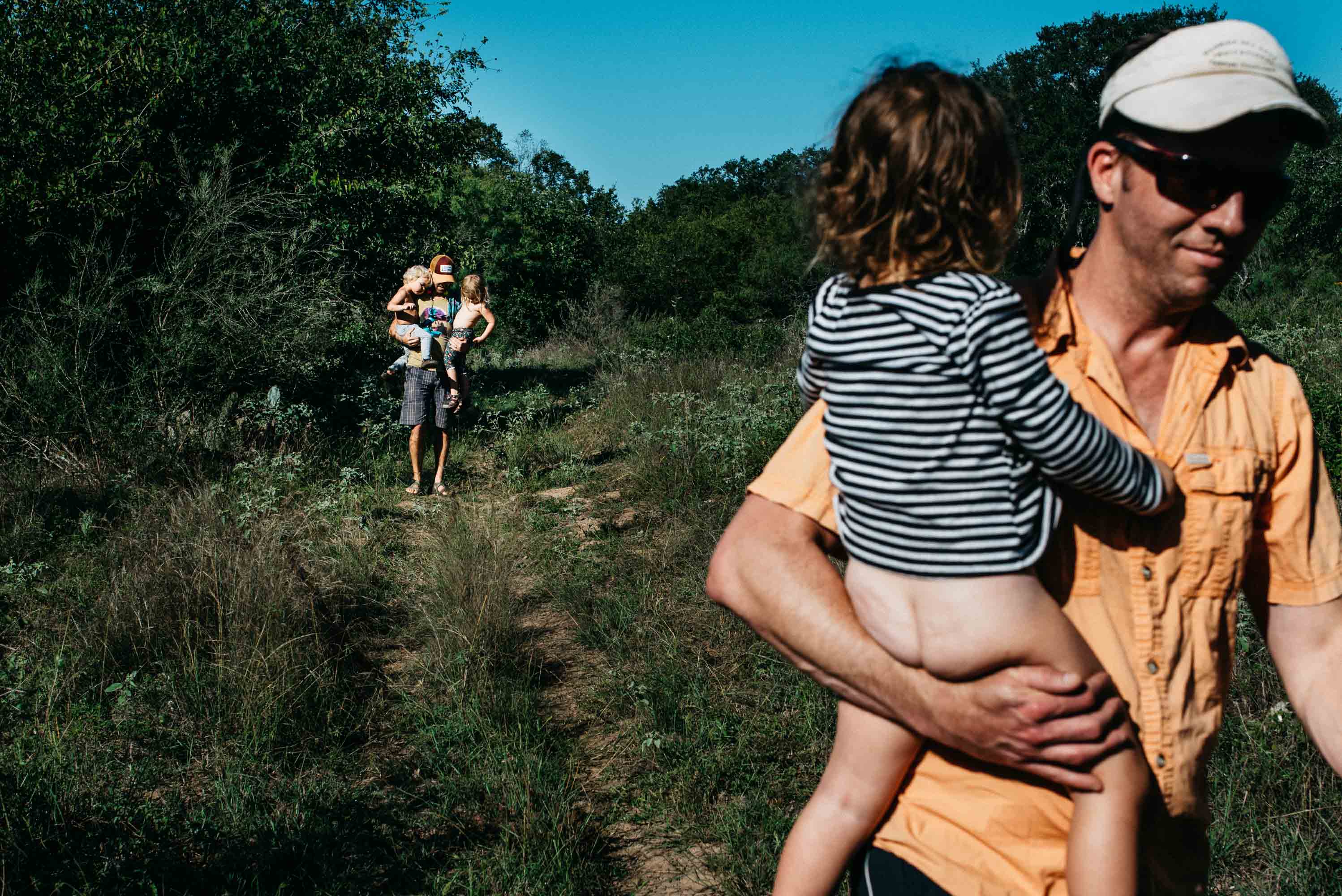
Aniya: Ok, I am BLOWN away by your work and utterly in awe of this project. Your framing is superb, layering is incredible and your ability to get such stories in one image is fantastic. Are you shooting the #dadlife project everyday? If not, how often? Is it a discipled project, or do you photograph only when you are drawn to a moment?
Oh gosh, I wish I could shoot this project every day. Sometimes (when we’re on a family trip together) I do keep this project in mind throughout the day, and find opportunities to shoot something for it often. At home when we’re in the grind of our routines, days – sometimes weeks – will go by with nothing new. I seek out opportunities to add a piece to the story that doesn’t already exist in the collection. There are elements of his relationship with the kids that I’d like to highlight in the project, but it just hasn’t come together yet. I always pay attention with heightened awareness when those scenes are unfolding in our life, to see if I might be able to make a photo for the project. It’s fun thinking of it as a someday-to-be complete story of what a rockstar dad my heartthrob husband was when our children were little.
If you are in business, do you feel the same sort of freedom to photograph your clients in the same way you do with your family?
I really do, and I feel so lucky for that. I am a documentary family photographer, and one of my goals is always to have this kind of access to my client families. And for the most part, I’ve been blessed with clients who are willing to let me in – all the way in – and allow me to photograph the most intimate corners of their family life. I love doing this for them. And I like to think that by showcasing my own personal life with such vulnerability (through #dadlife and my corresponding motherhood self portraits project, Babies & Bourbon), it will inspire my prospective clients to want the same for their own family sessions.
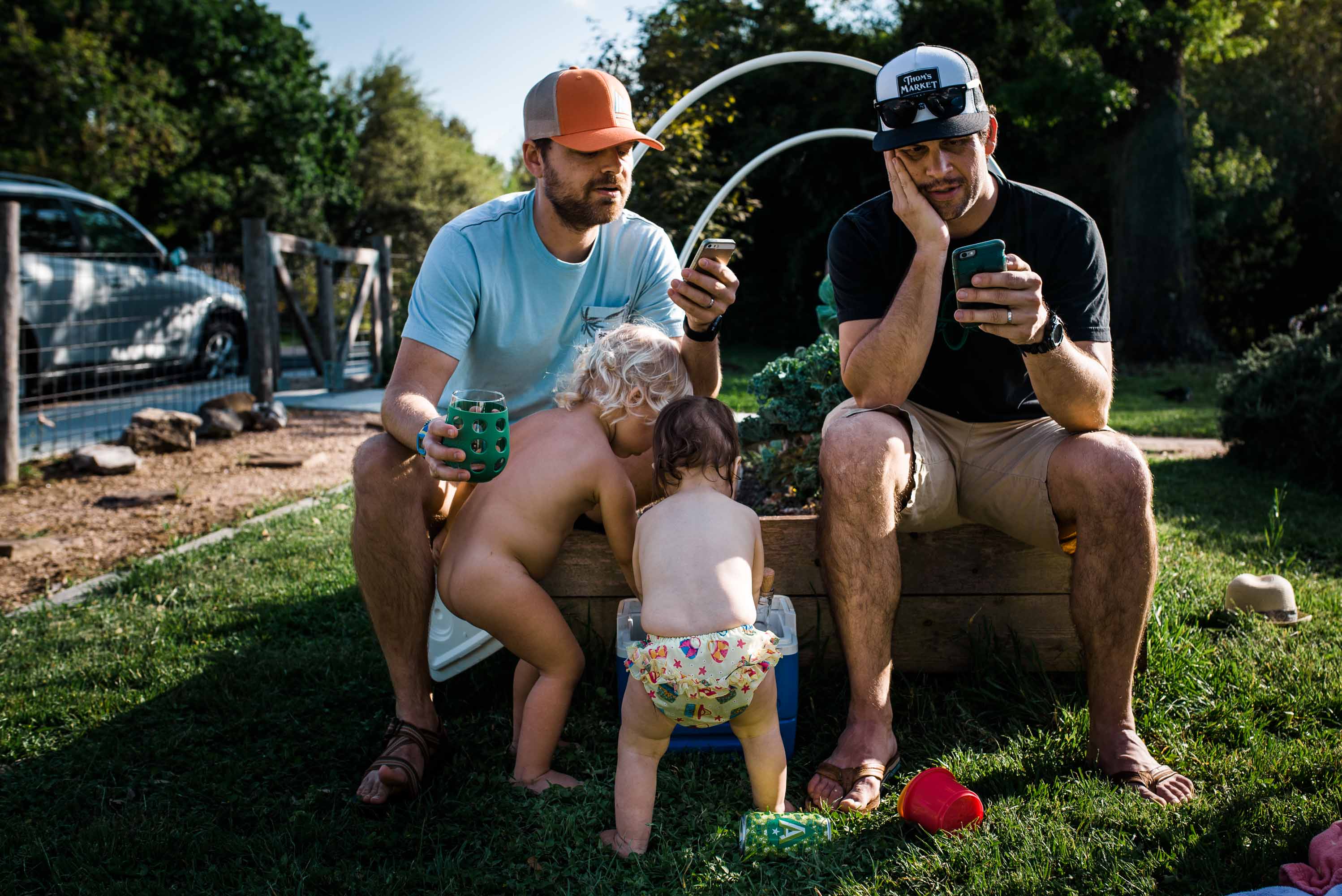
Erika: What is your end goal, if you have one for this project? Exhibit? Book? Personal enjoyment? And how does that end goal impact how you shoot and curate this project?
I’ve always thought of this project as a visual love letter to my husband, where I get to show him how deeply I admire and appreciate the incredible person that he is, the dynamic relationships he has forged with these two wild blond kids, and how much they adore him in return. That’s my goal. I had an early iteration of the project printed into a book for his birthday this year, but I hope to keep the project going for many years to come, perhaps adding books to a shelf as we go. In the long run, I’d love to publish them all together for him and the children when they’re up and grown.
But also, I often think about how every parent-child relationship is both unique and, at the same time, full of totally relatable elements and situations. This grand journey of parenting young kids is as universal as it is individual. I hope that other parents, in seeing my project, can imagine their own families in these scenes. I’ve occasionally considered expanding the project to include stories from client dads and their children, and putting together an anthology chronicling the fatherhood experience as seen through my lens. But knowing me, that’s a long, long way off.
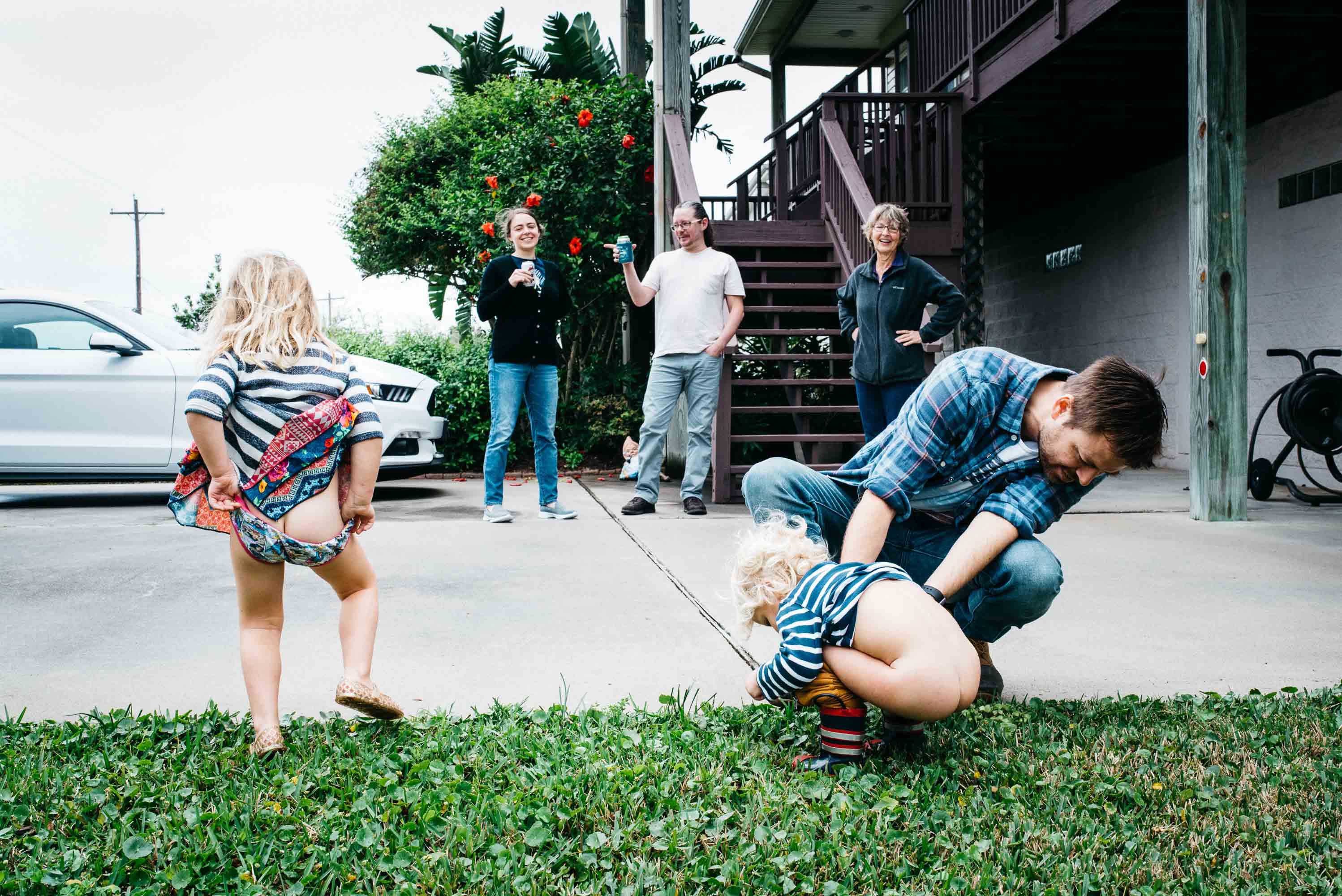
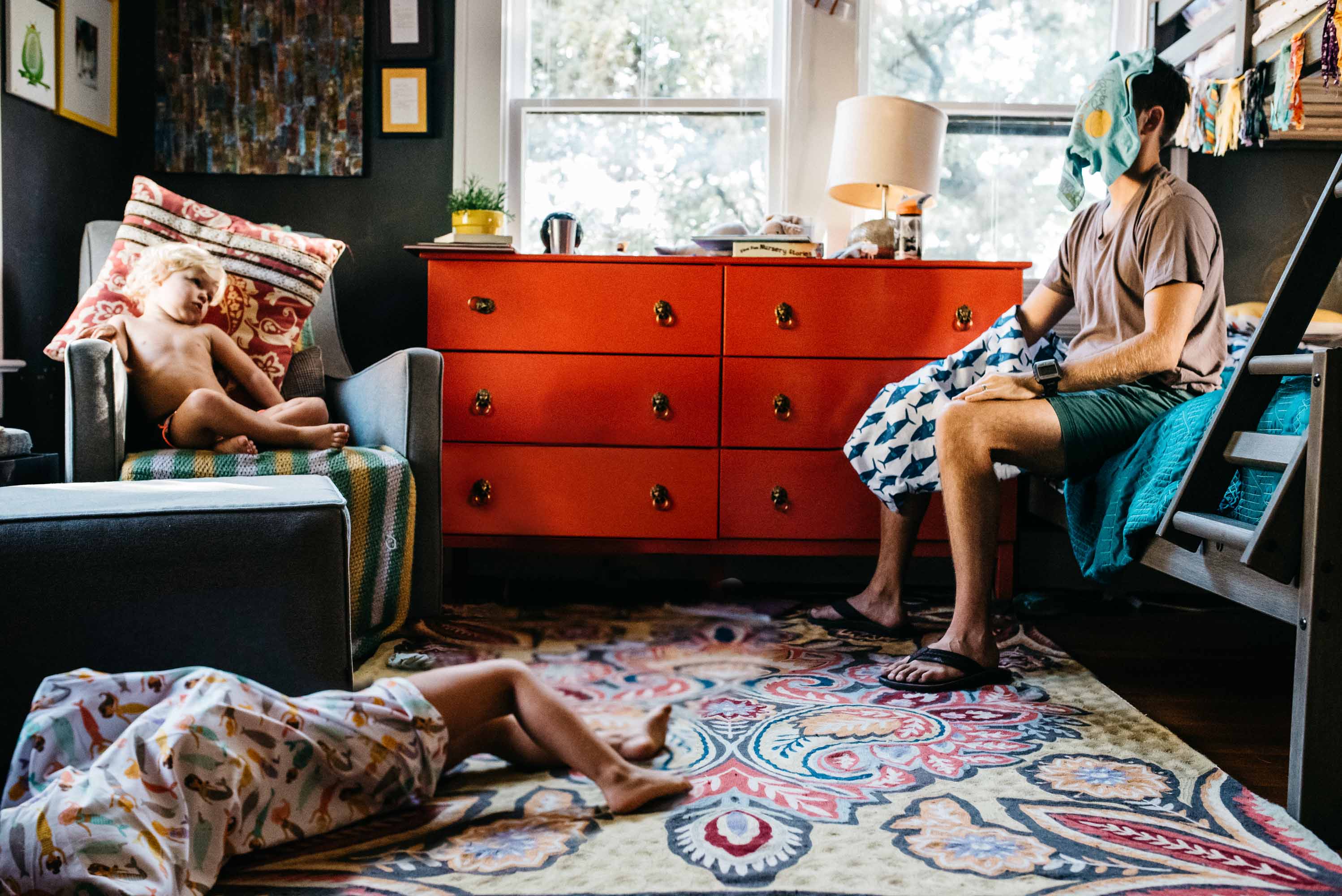
*****
Want information on how you can be a featured artist? Check out our submission page for all the details.
